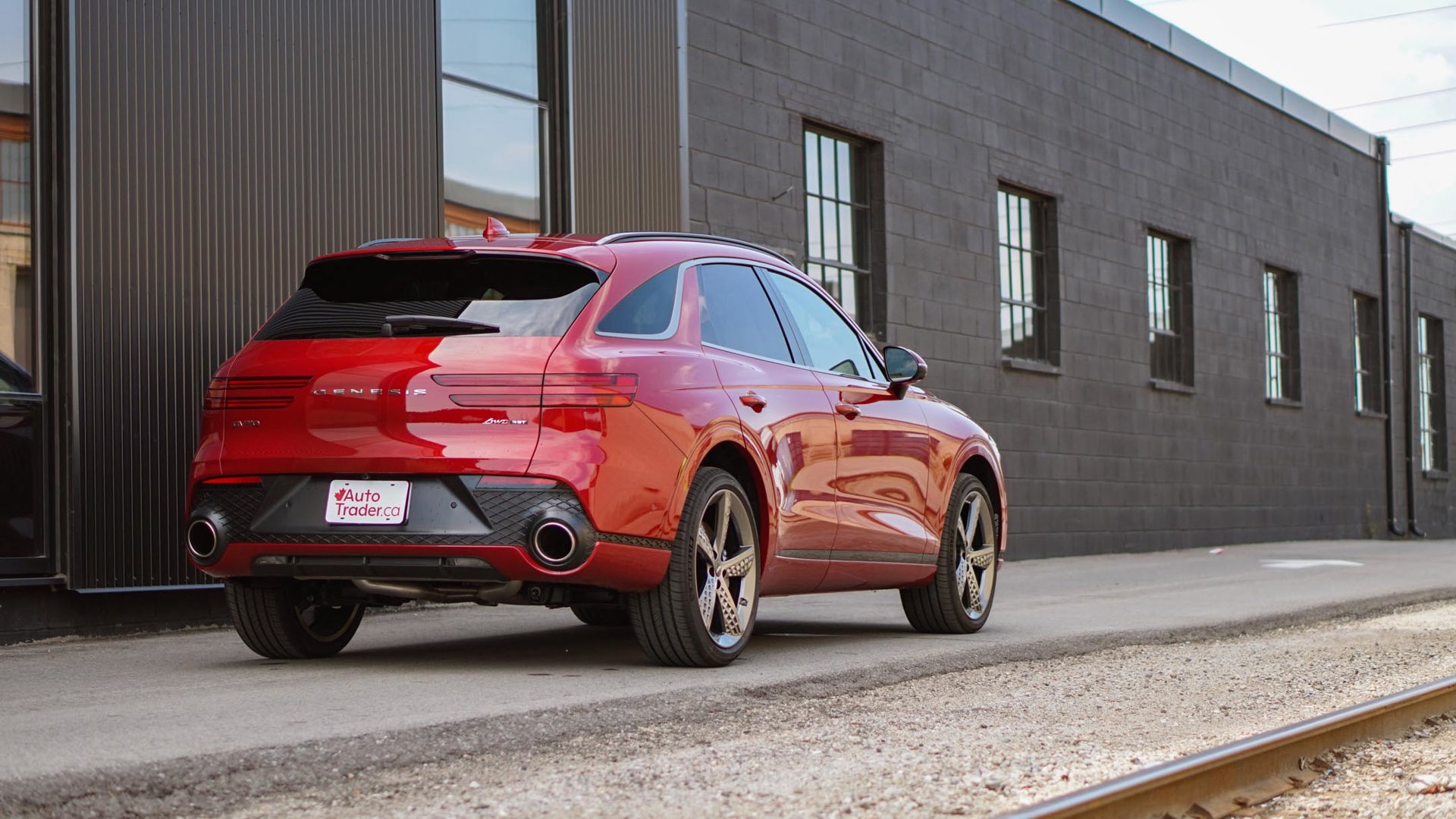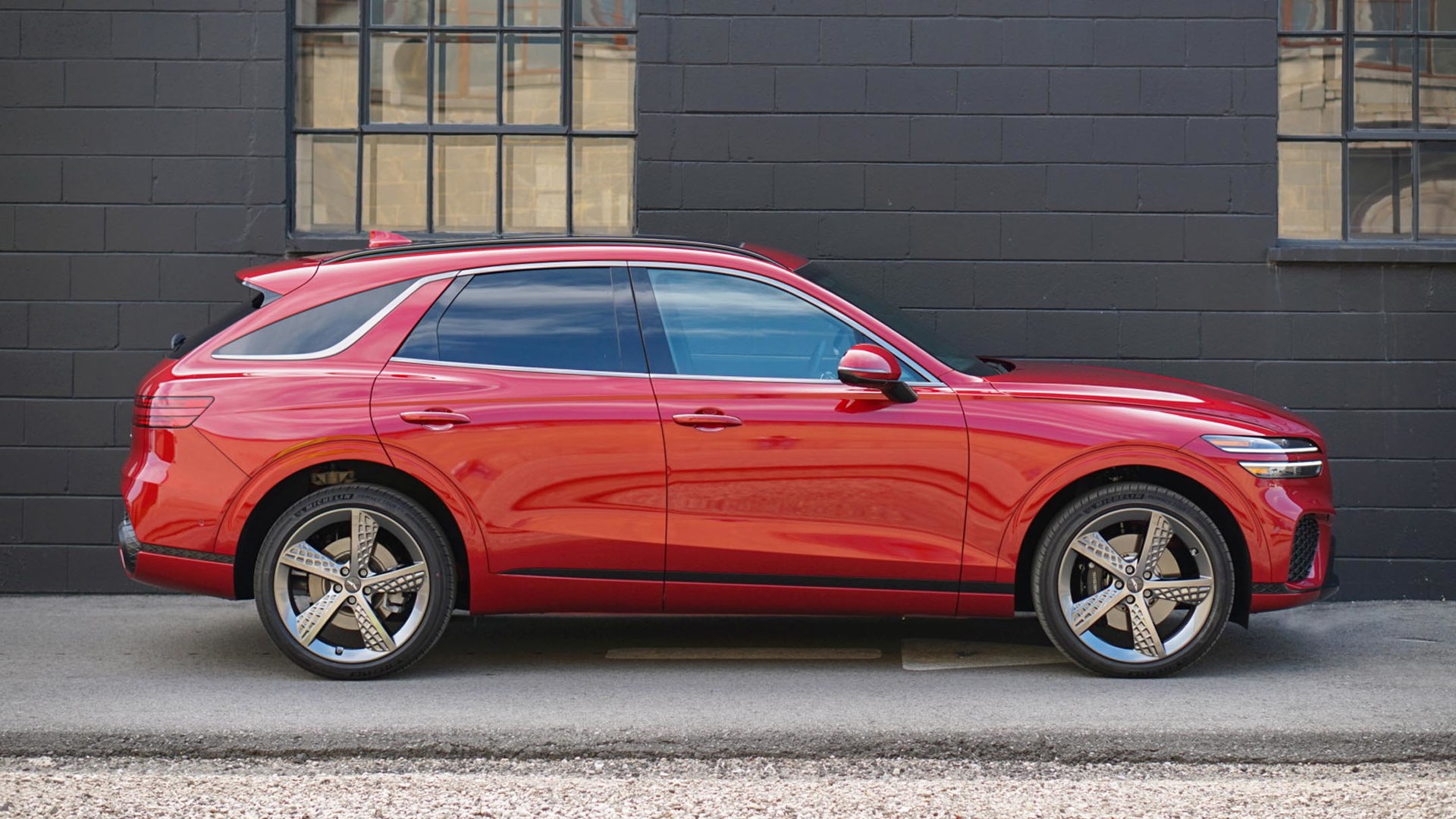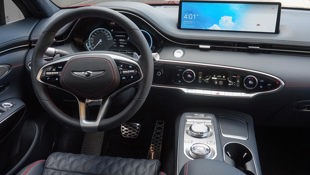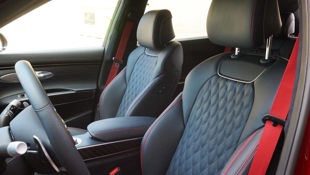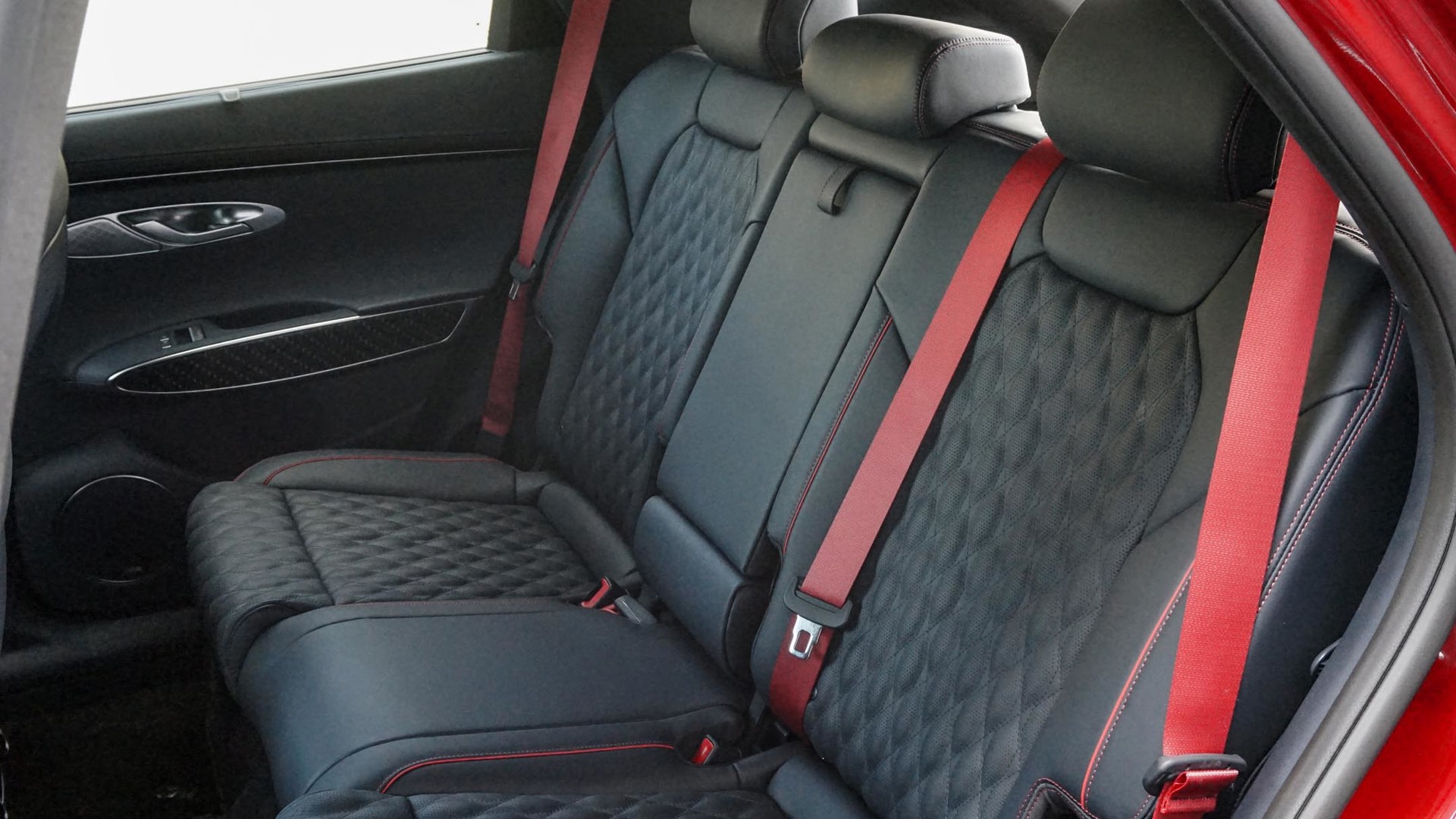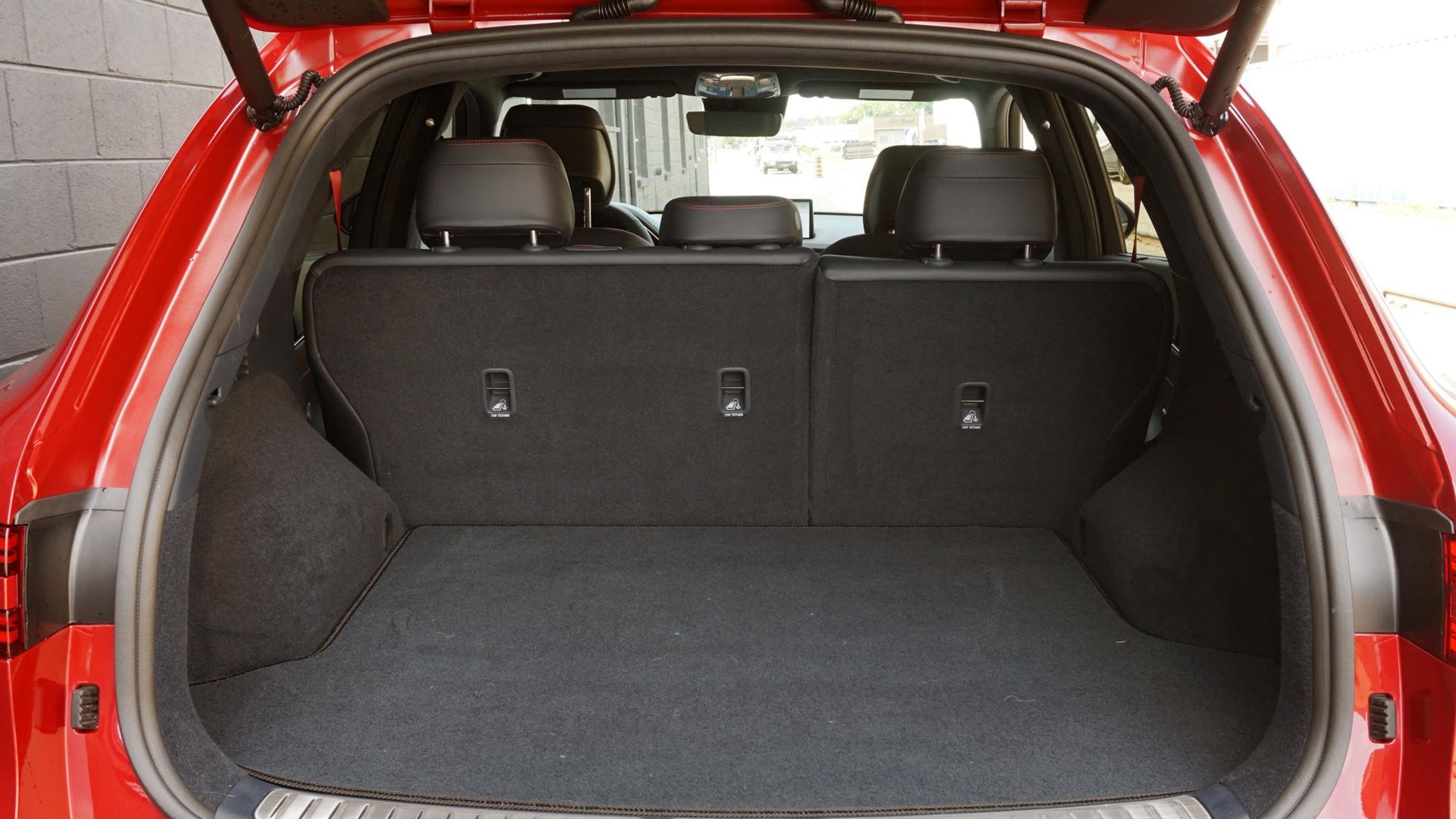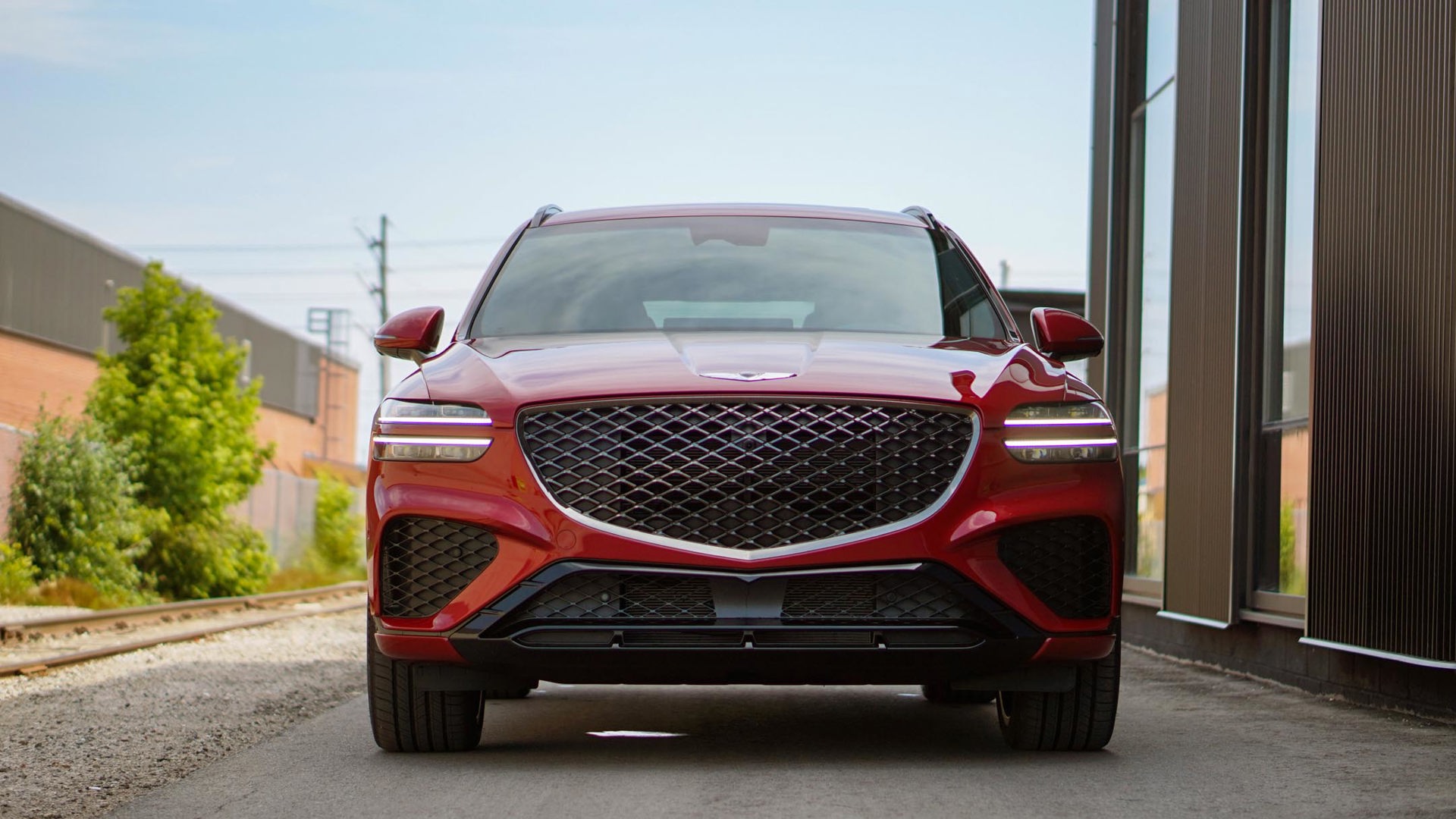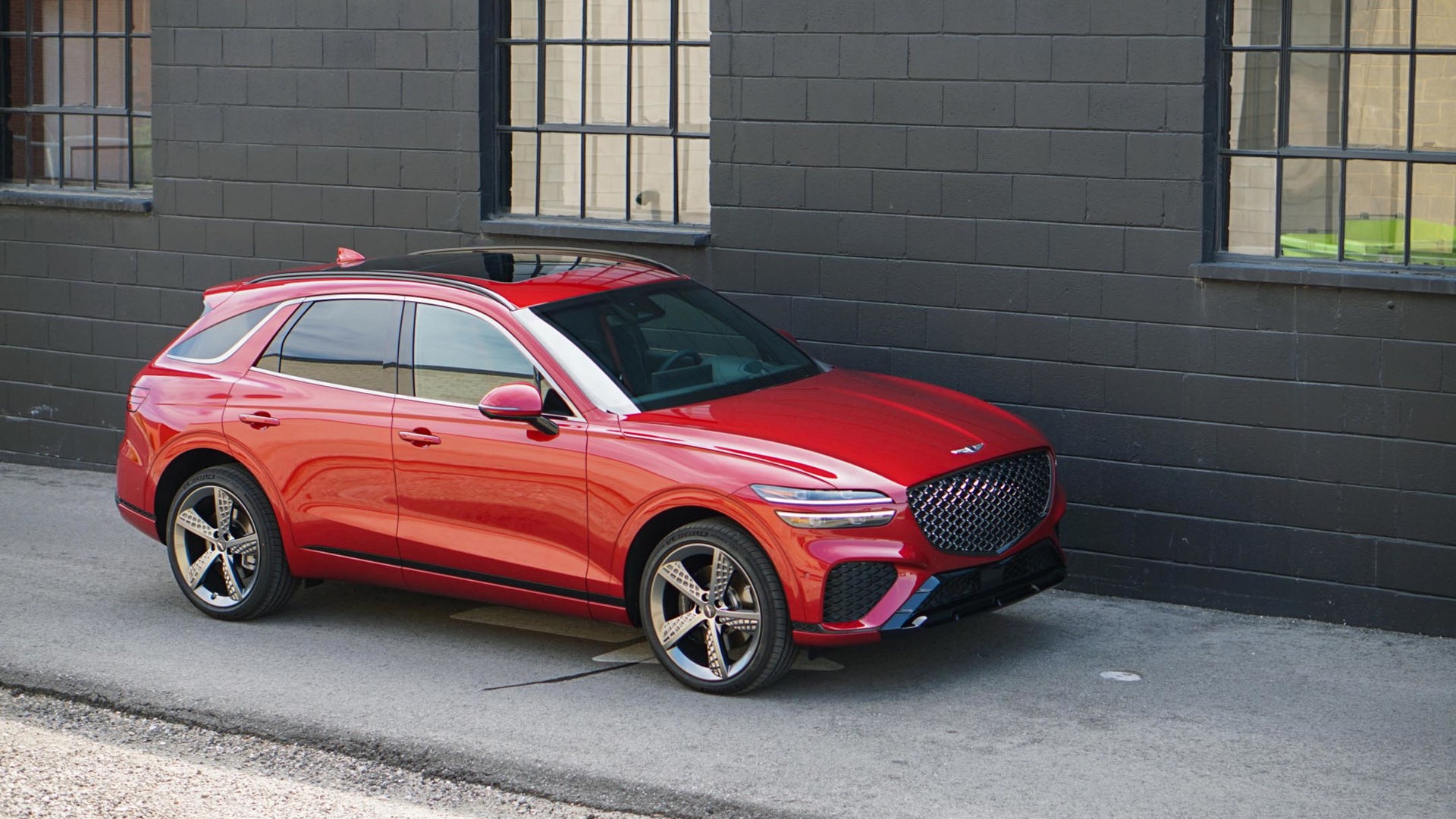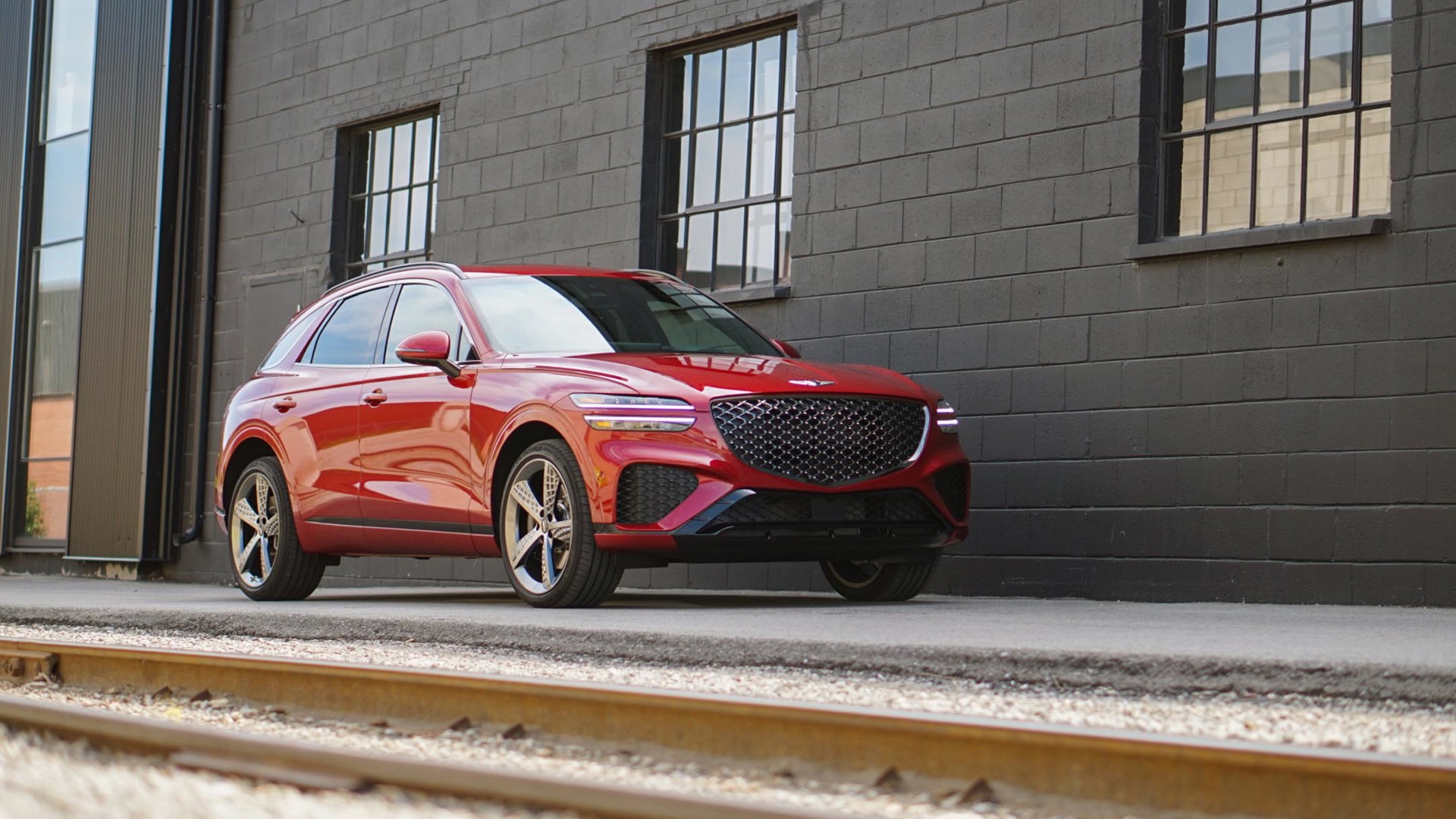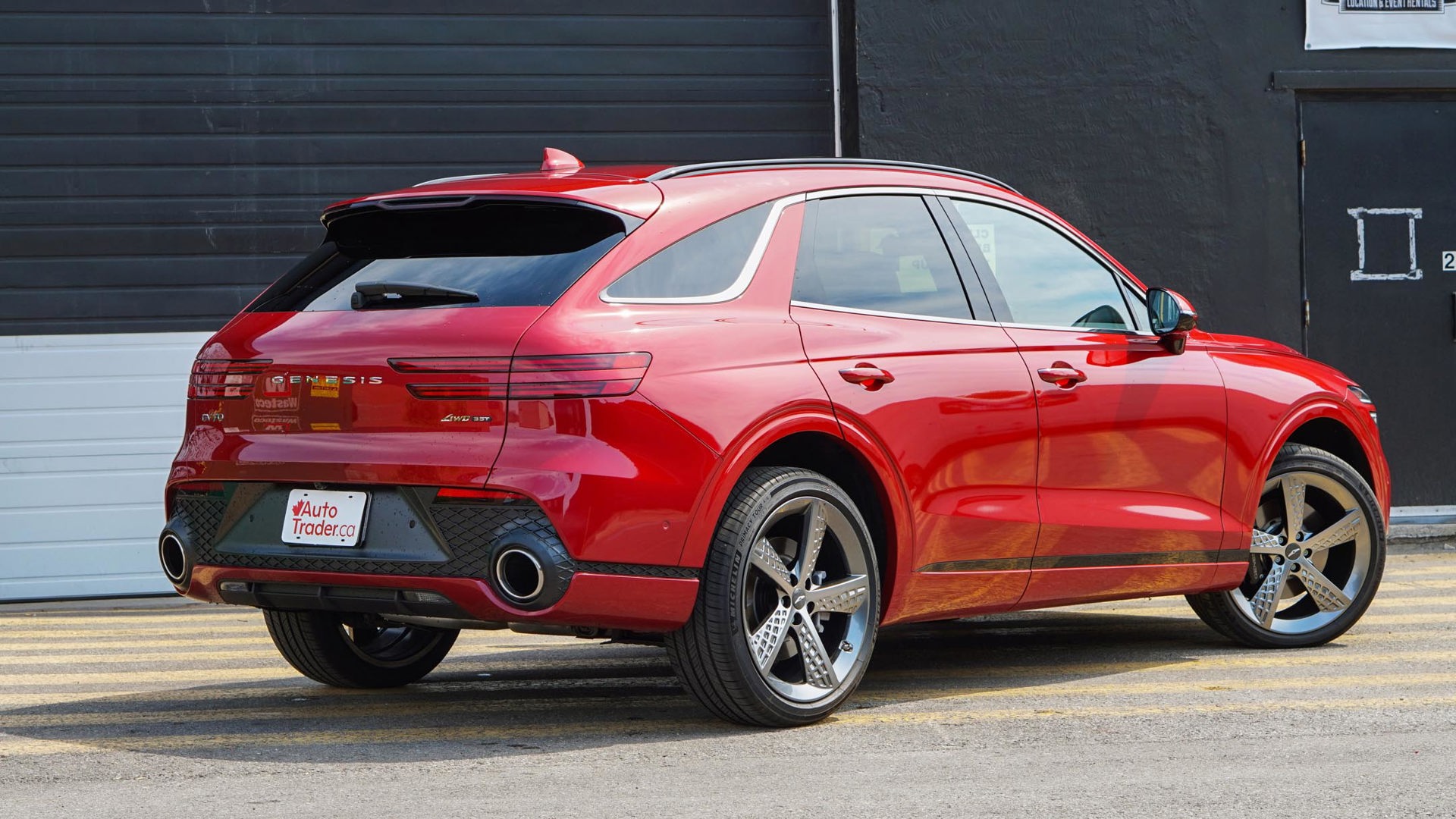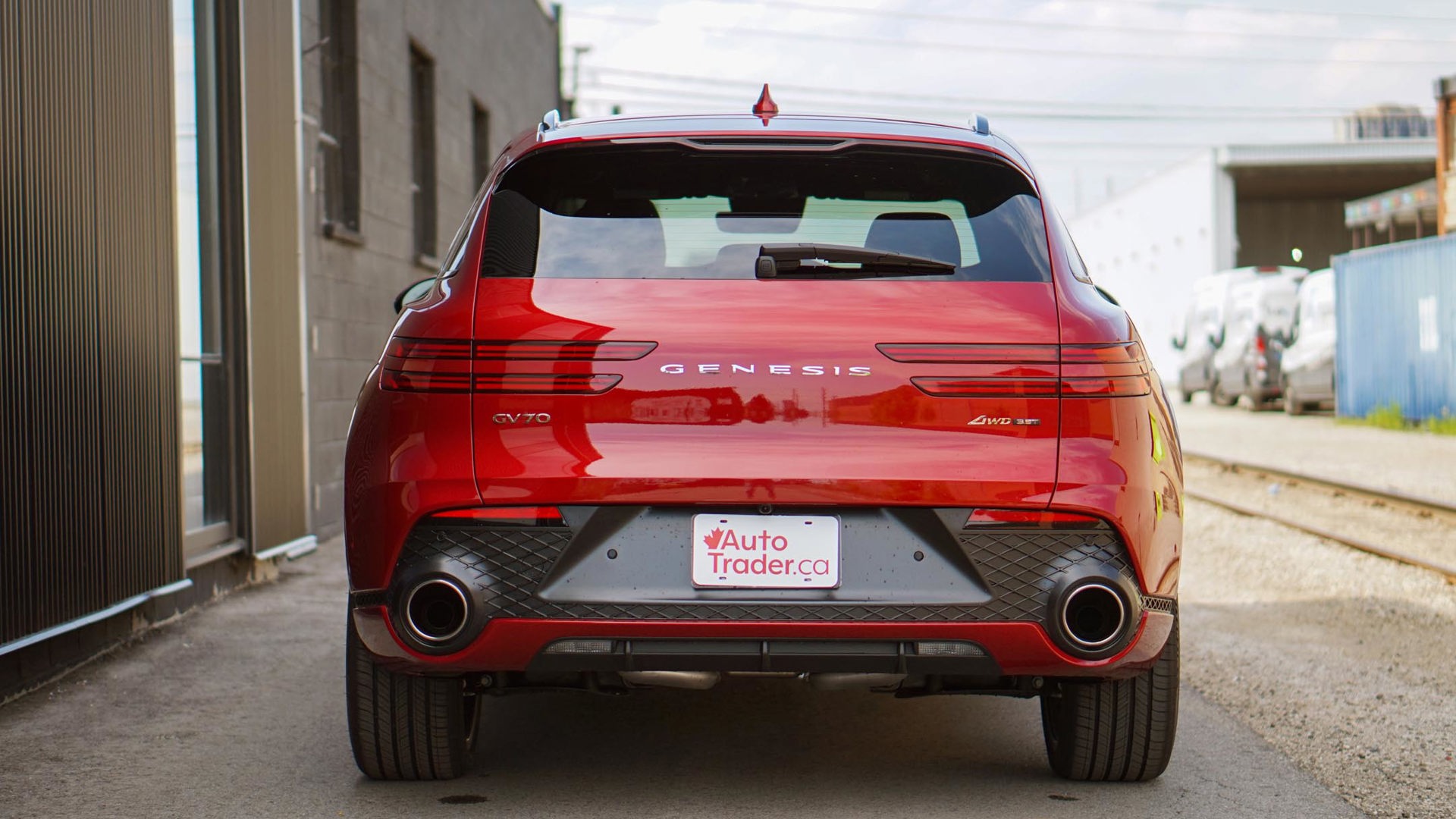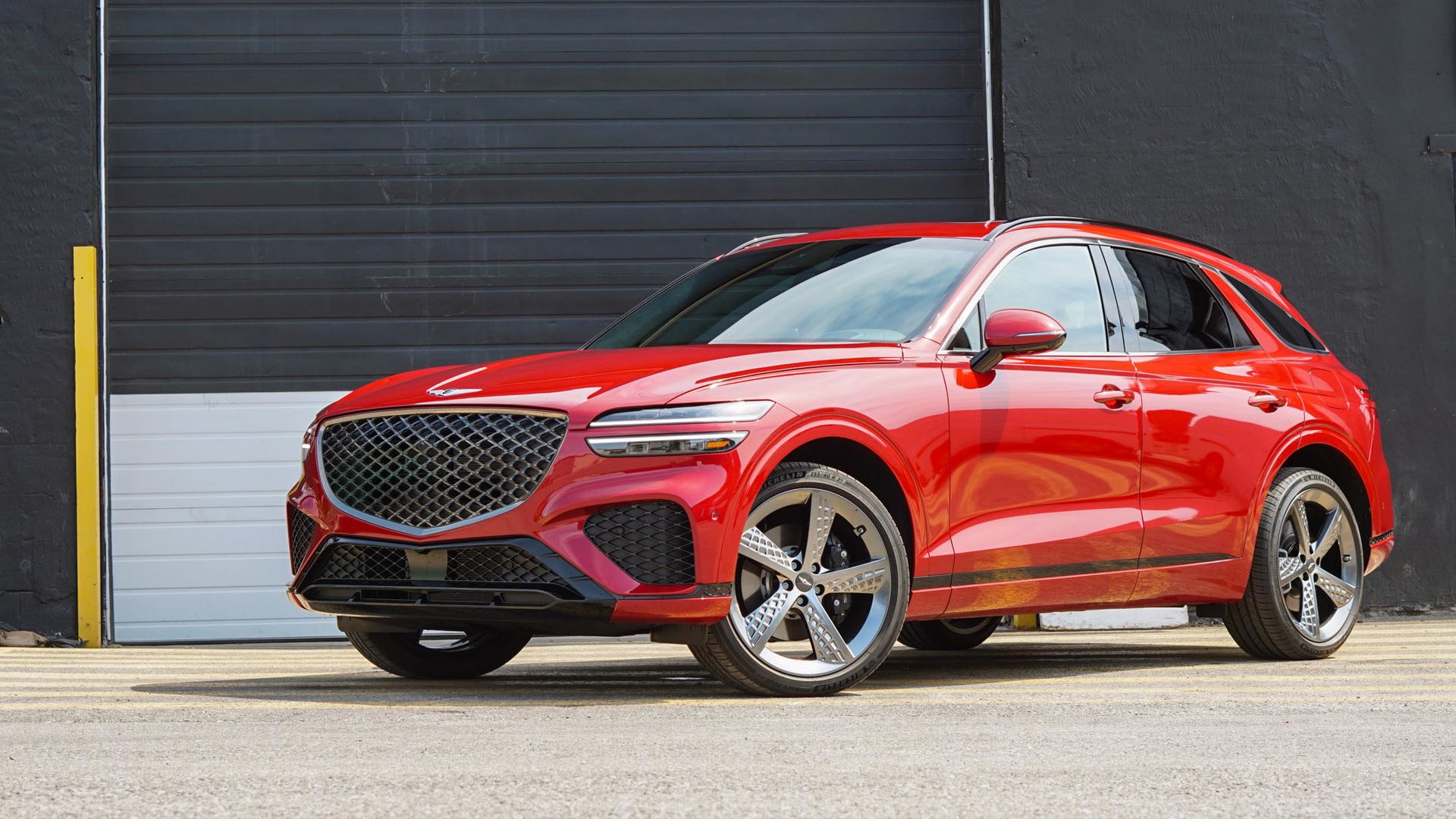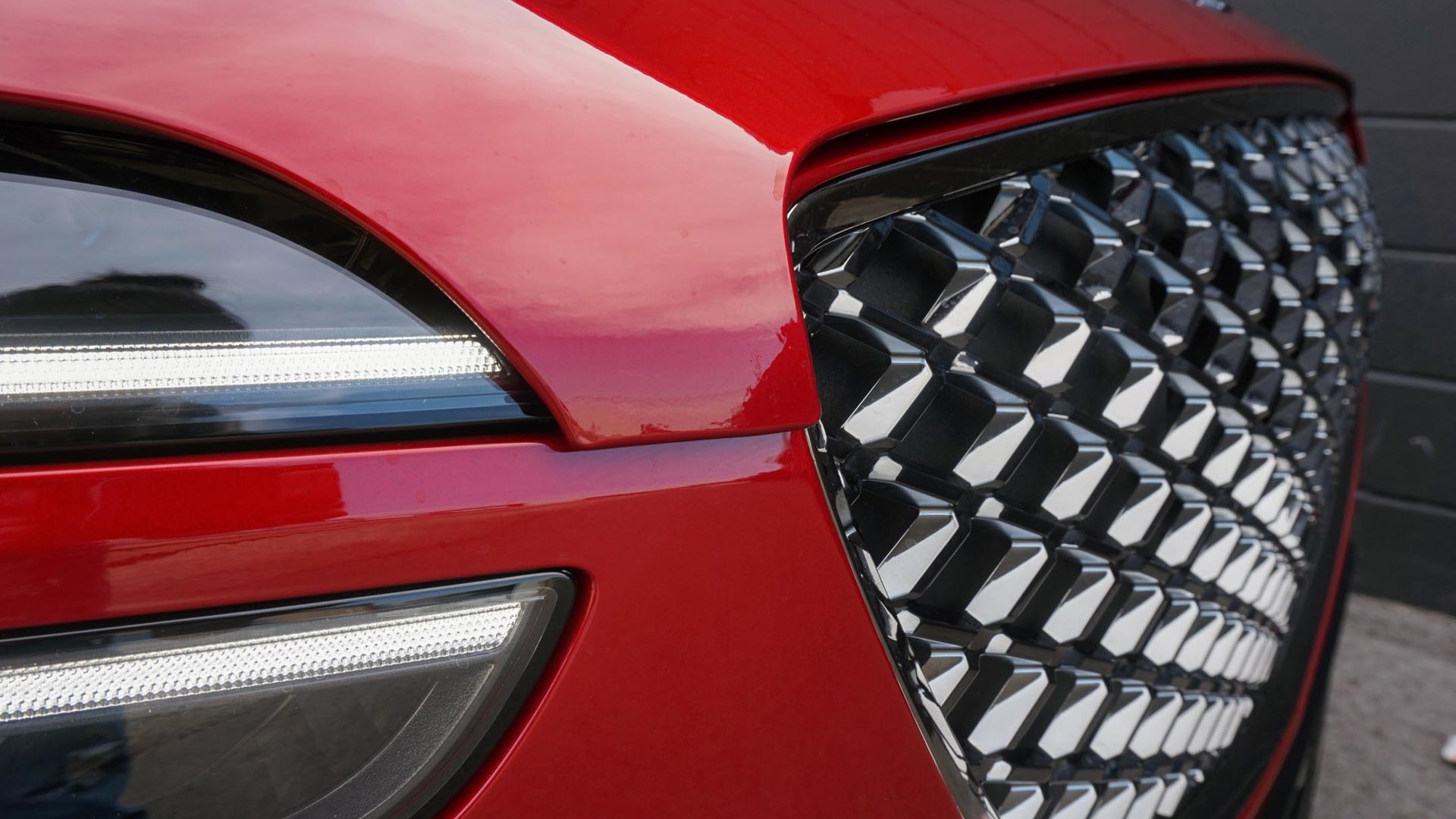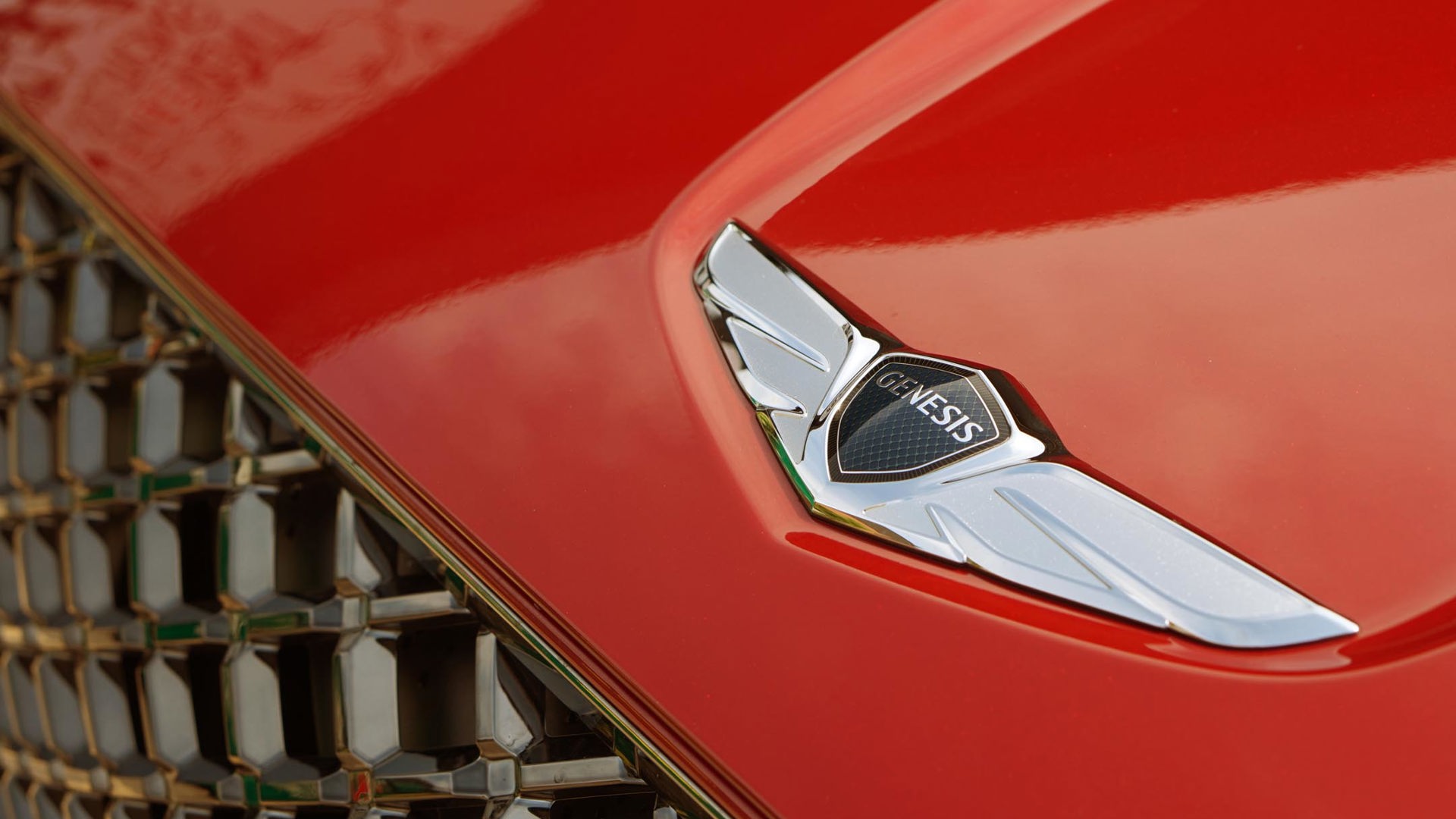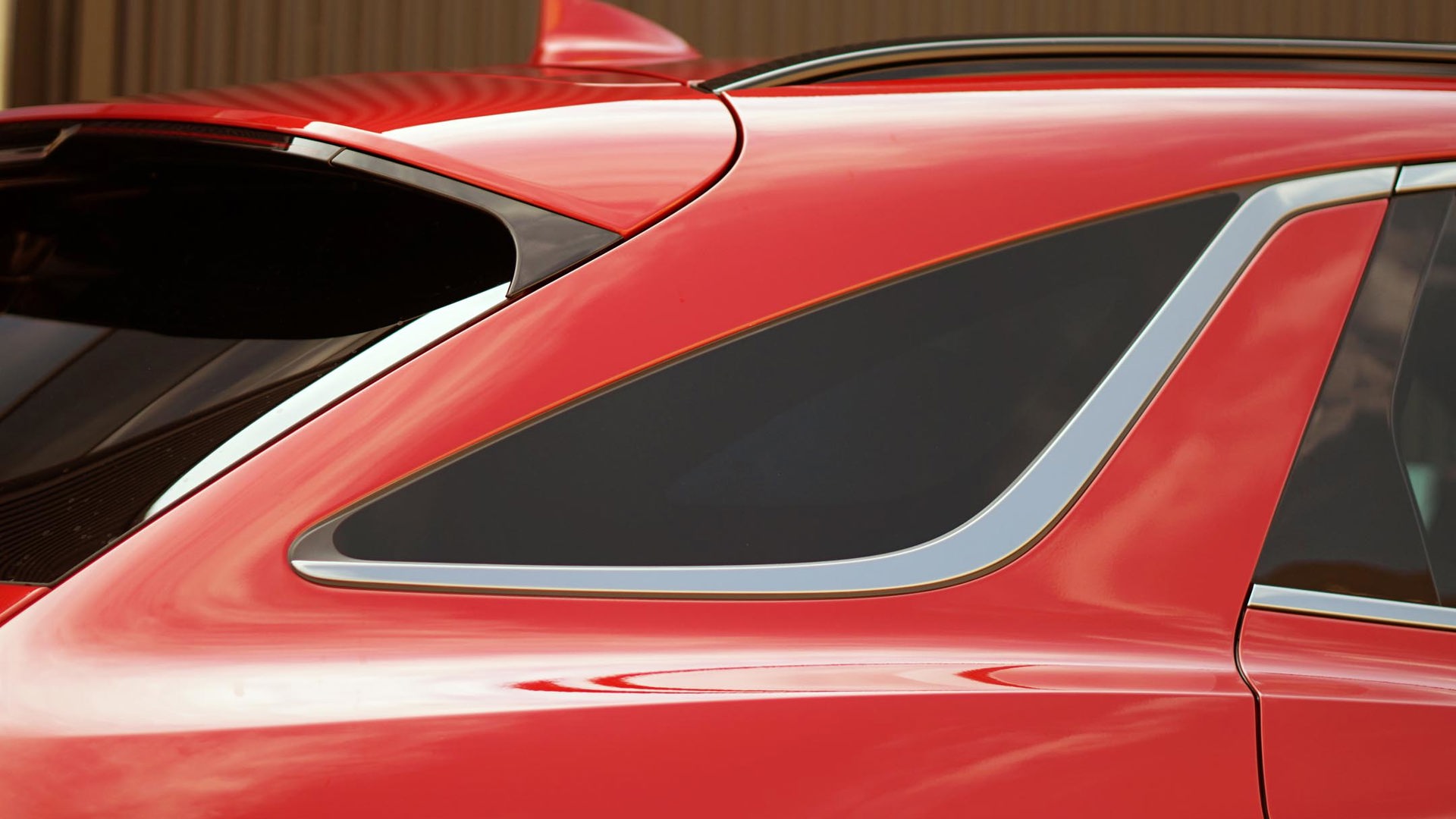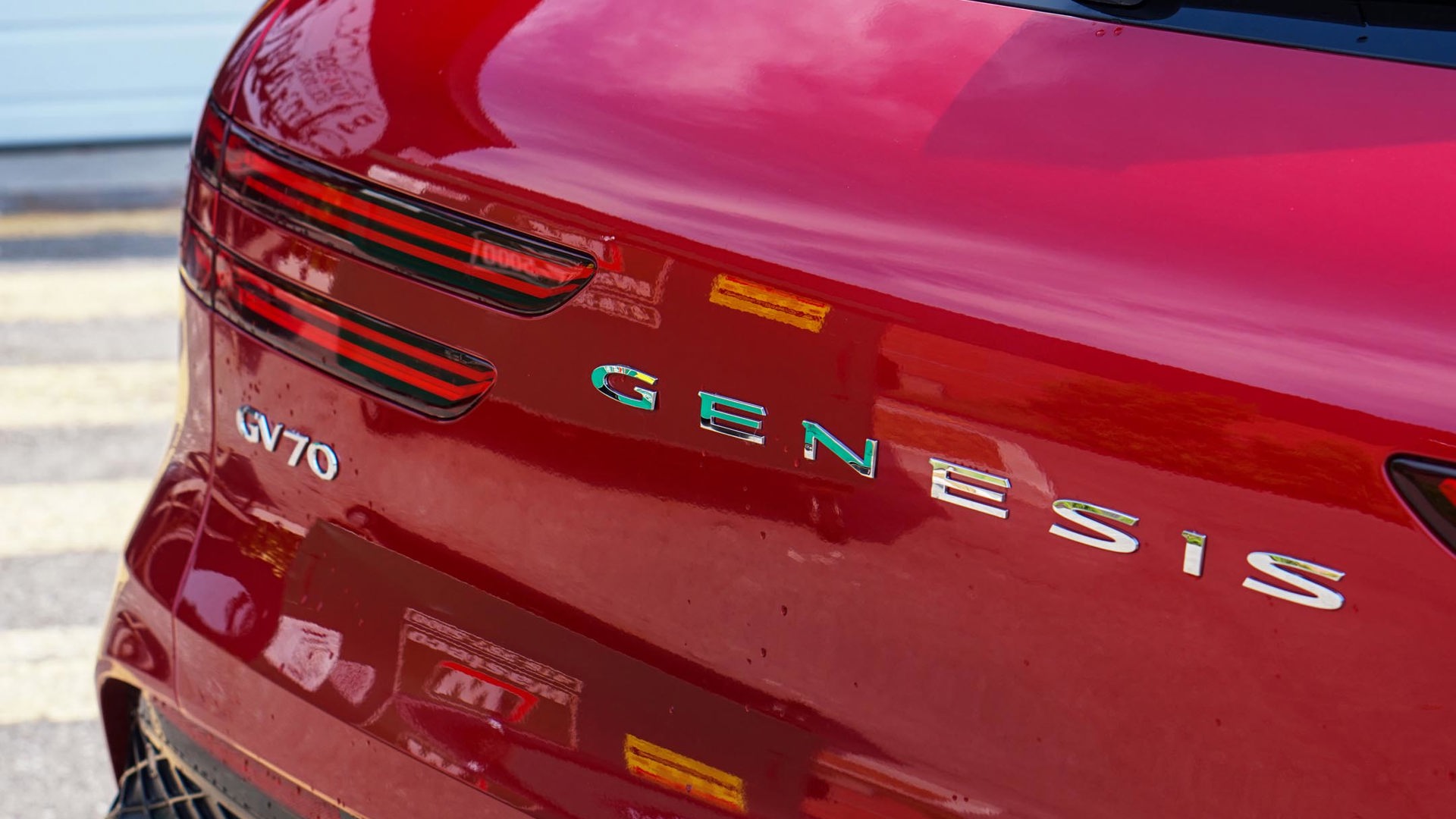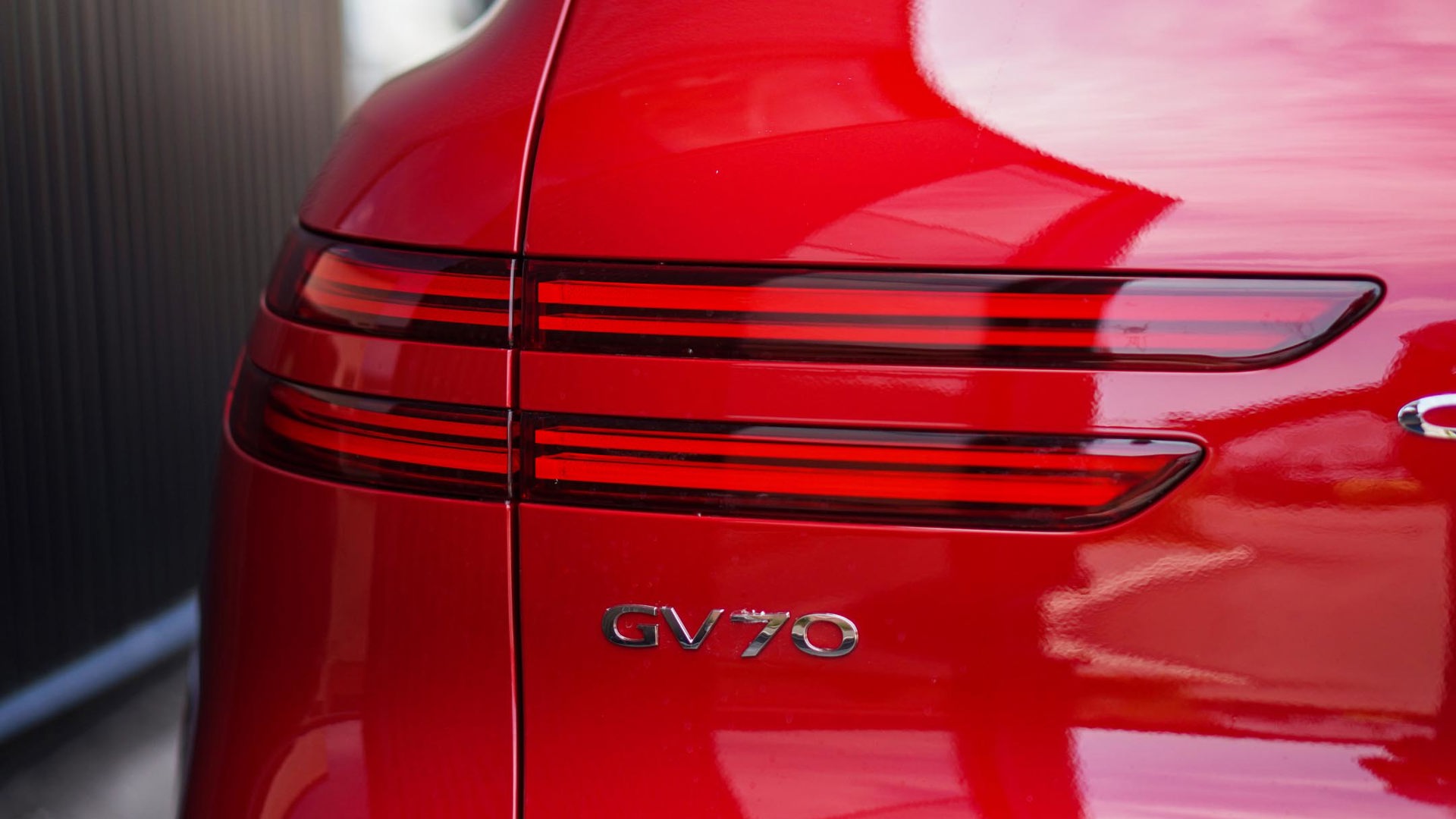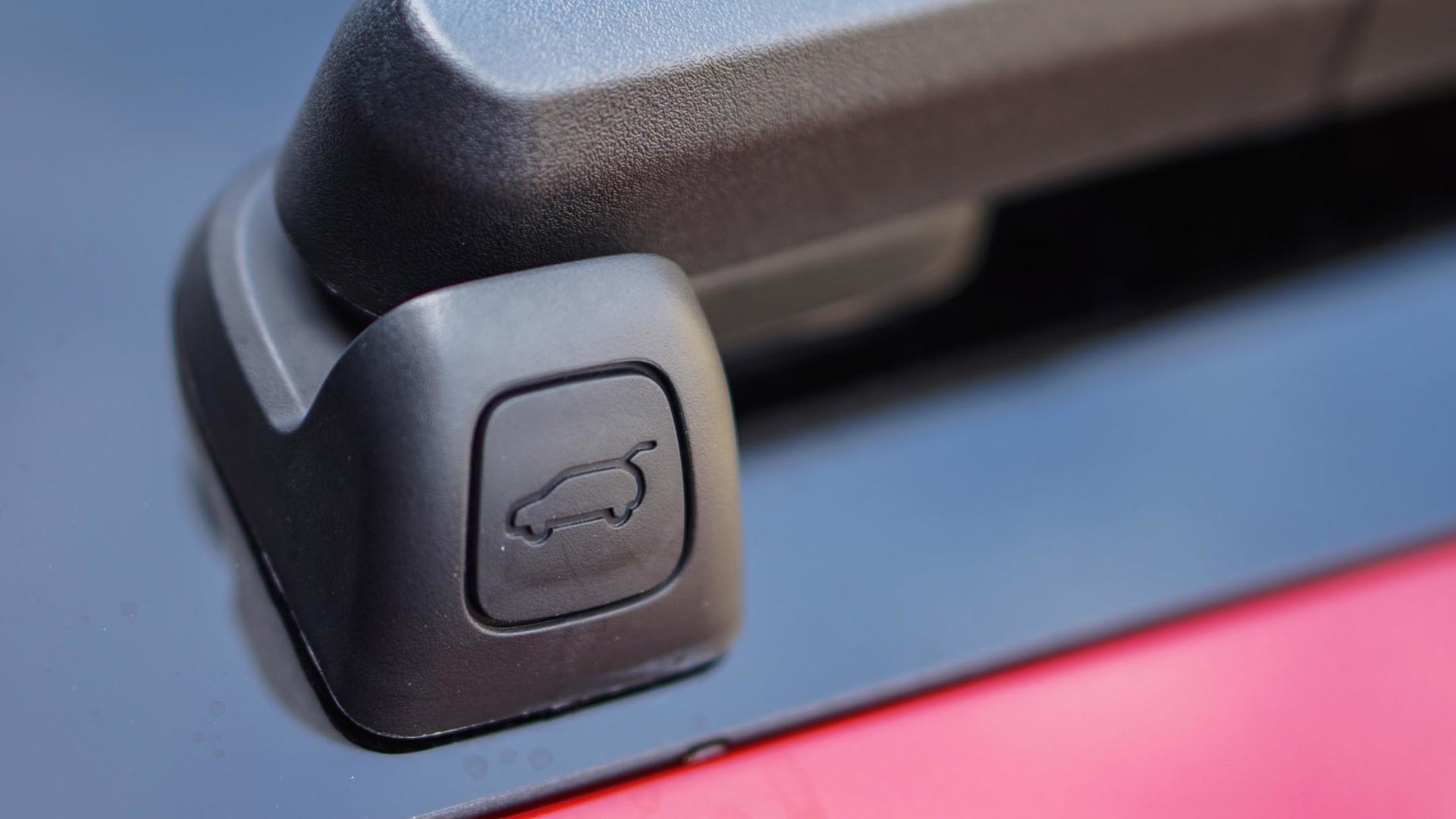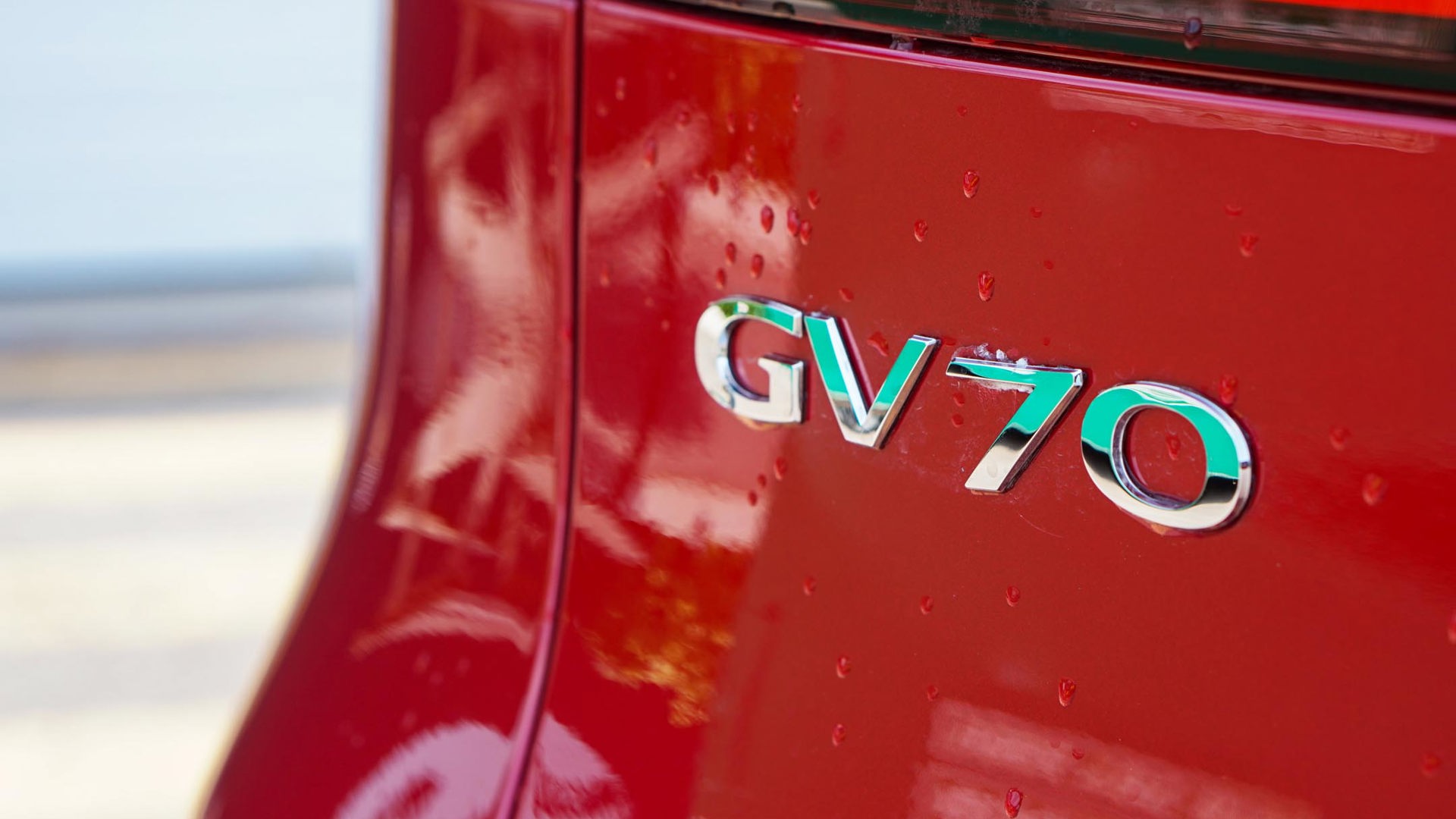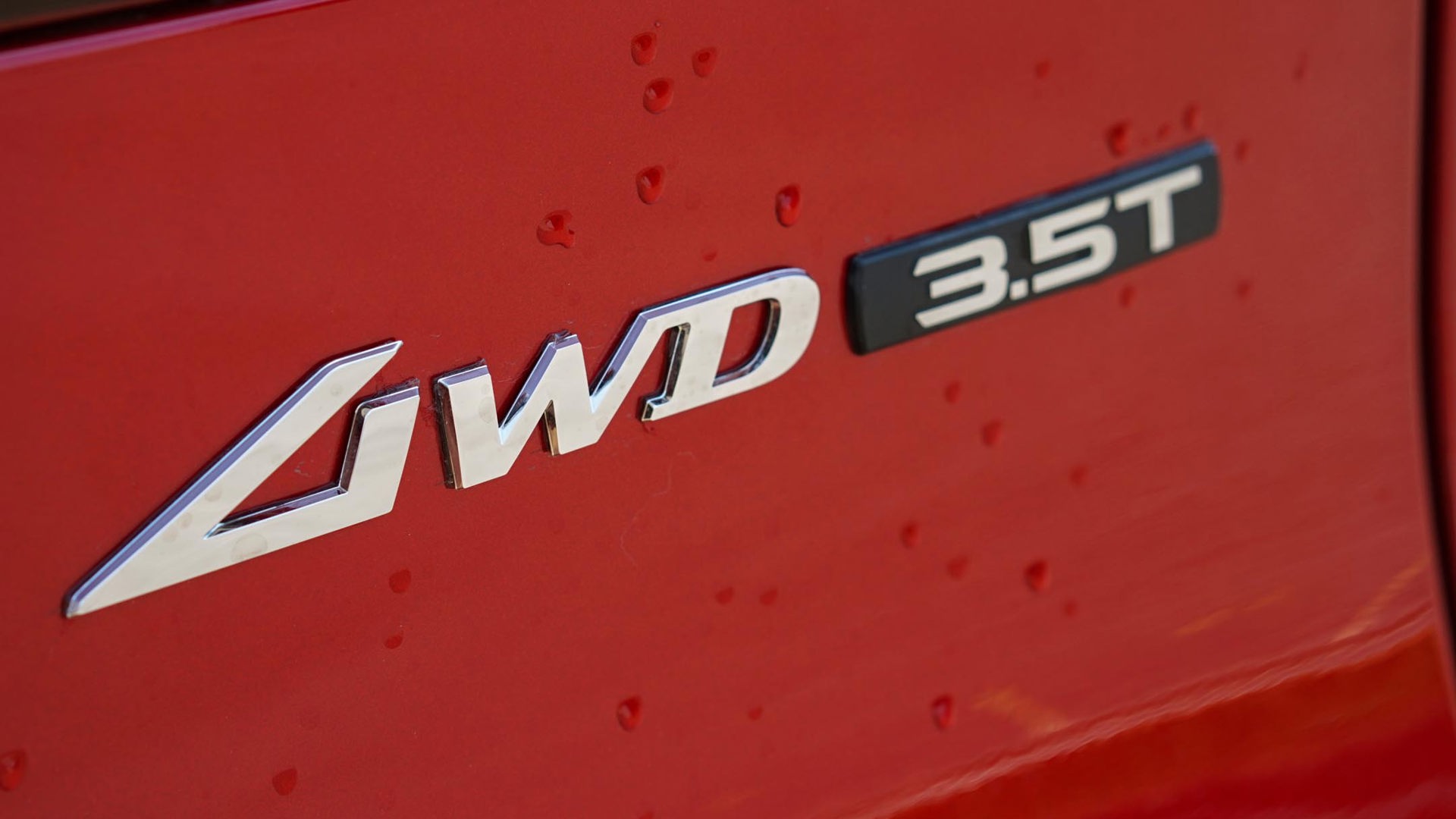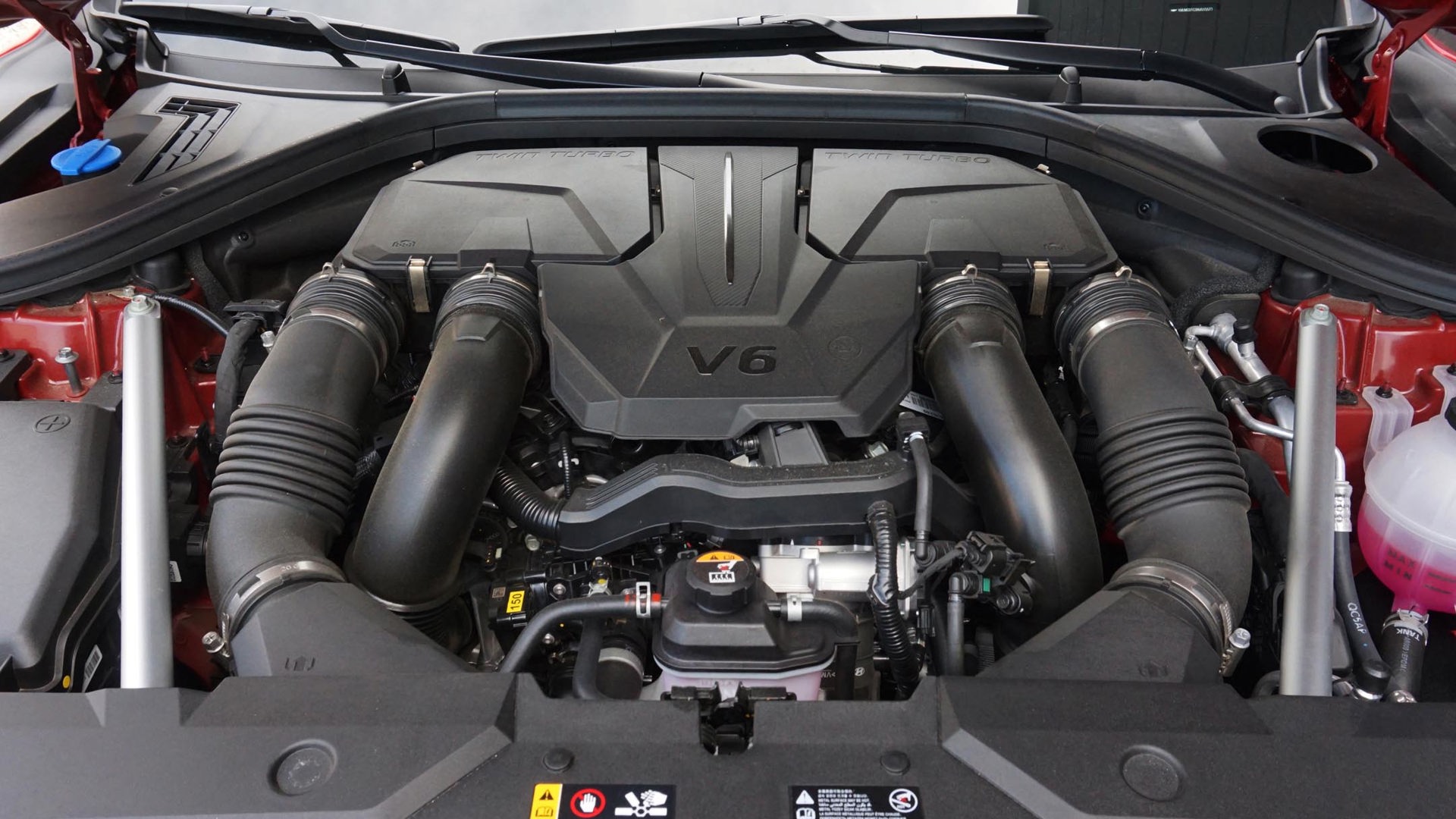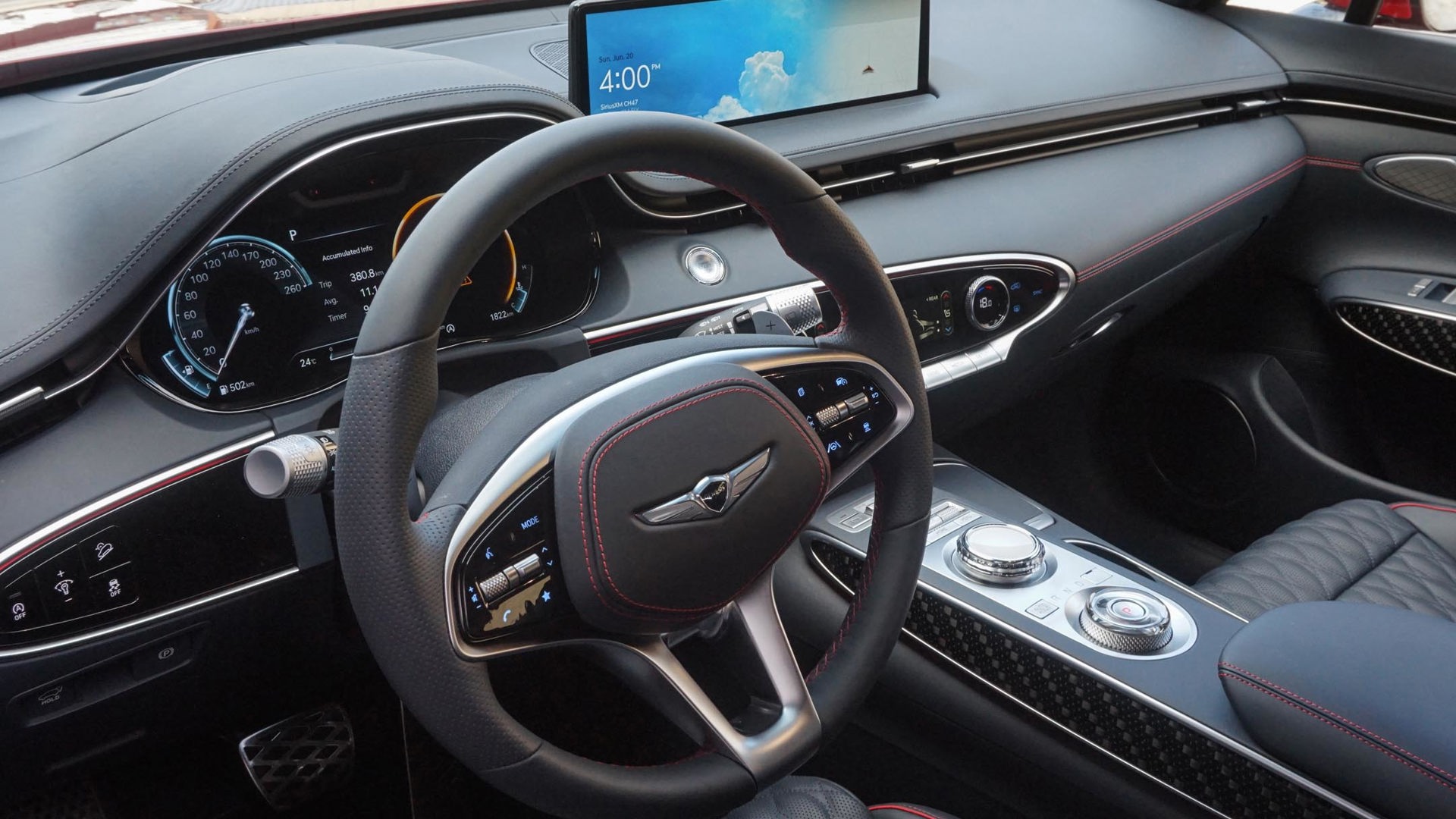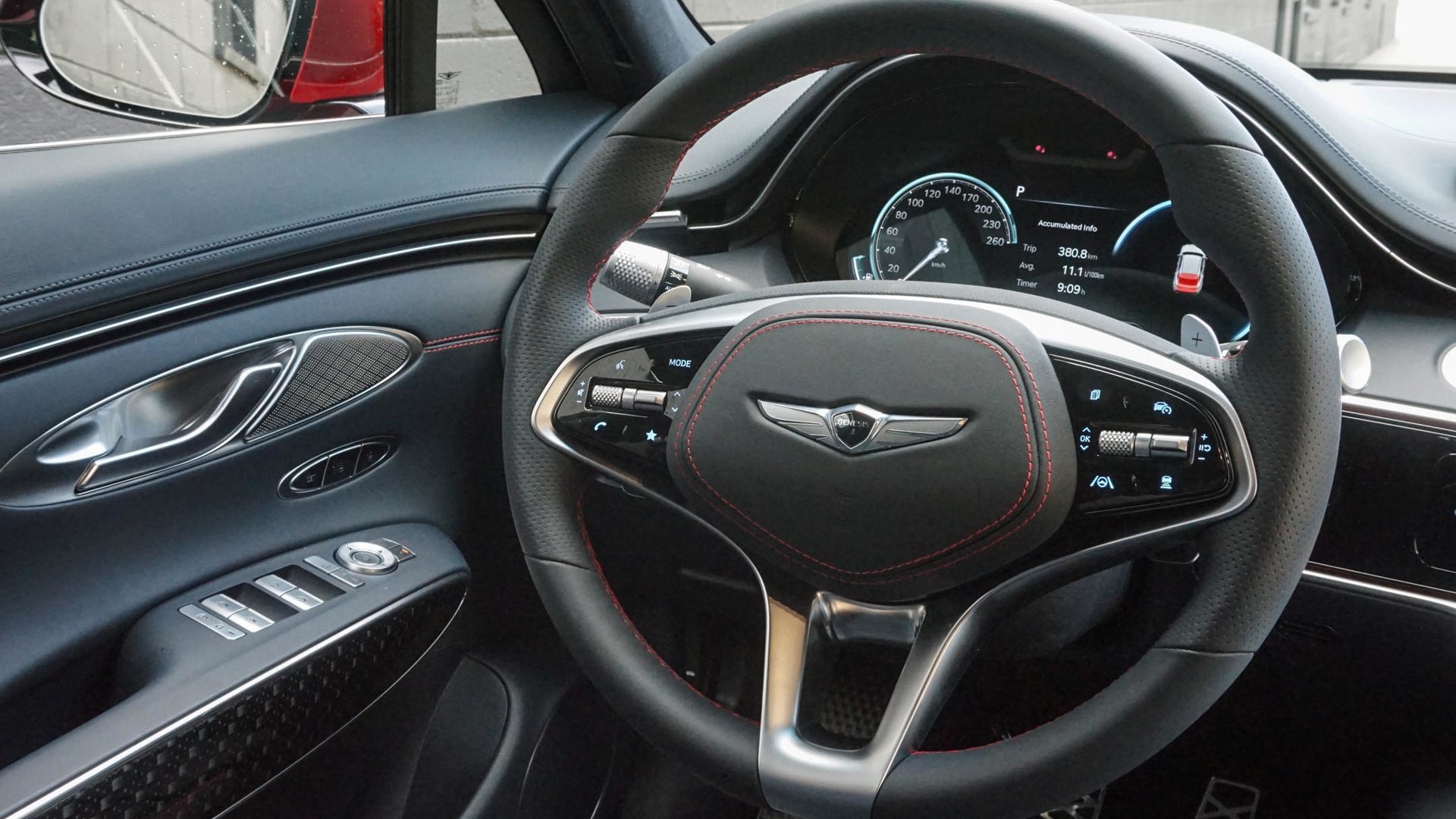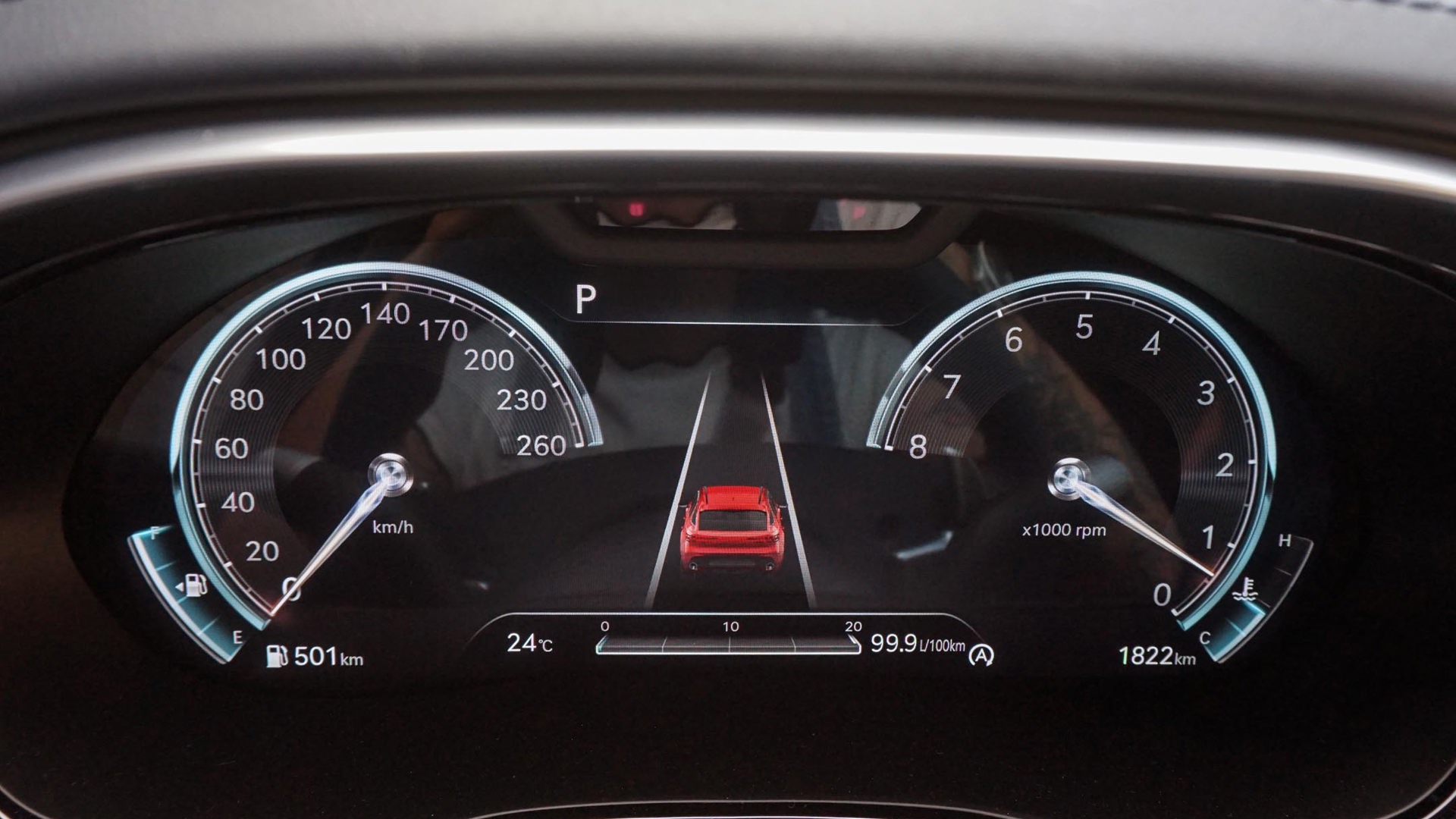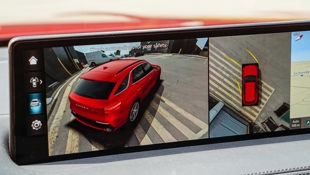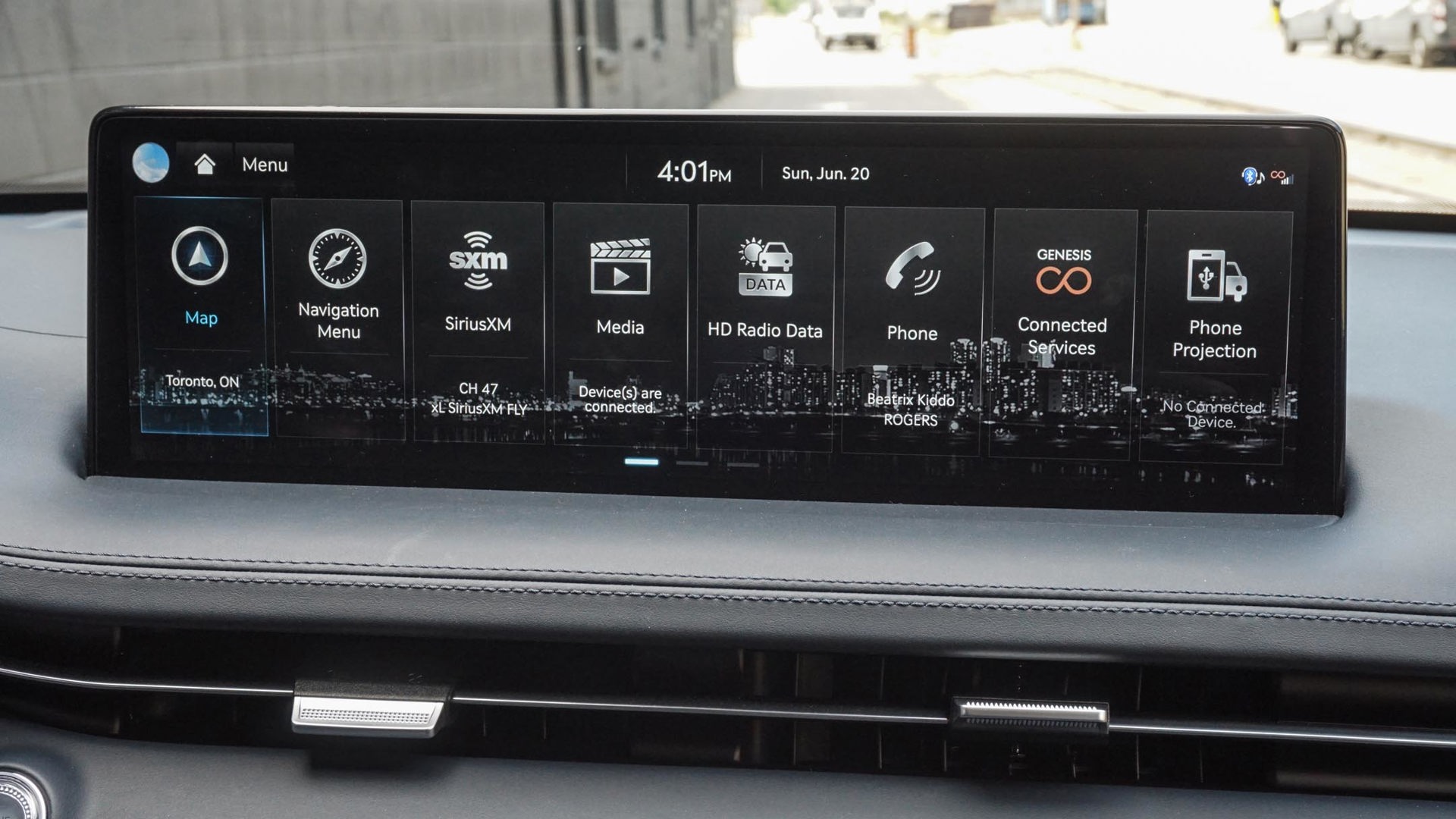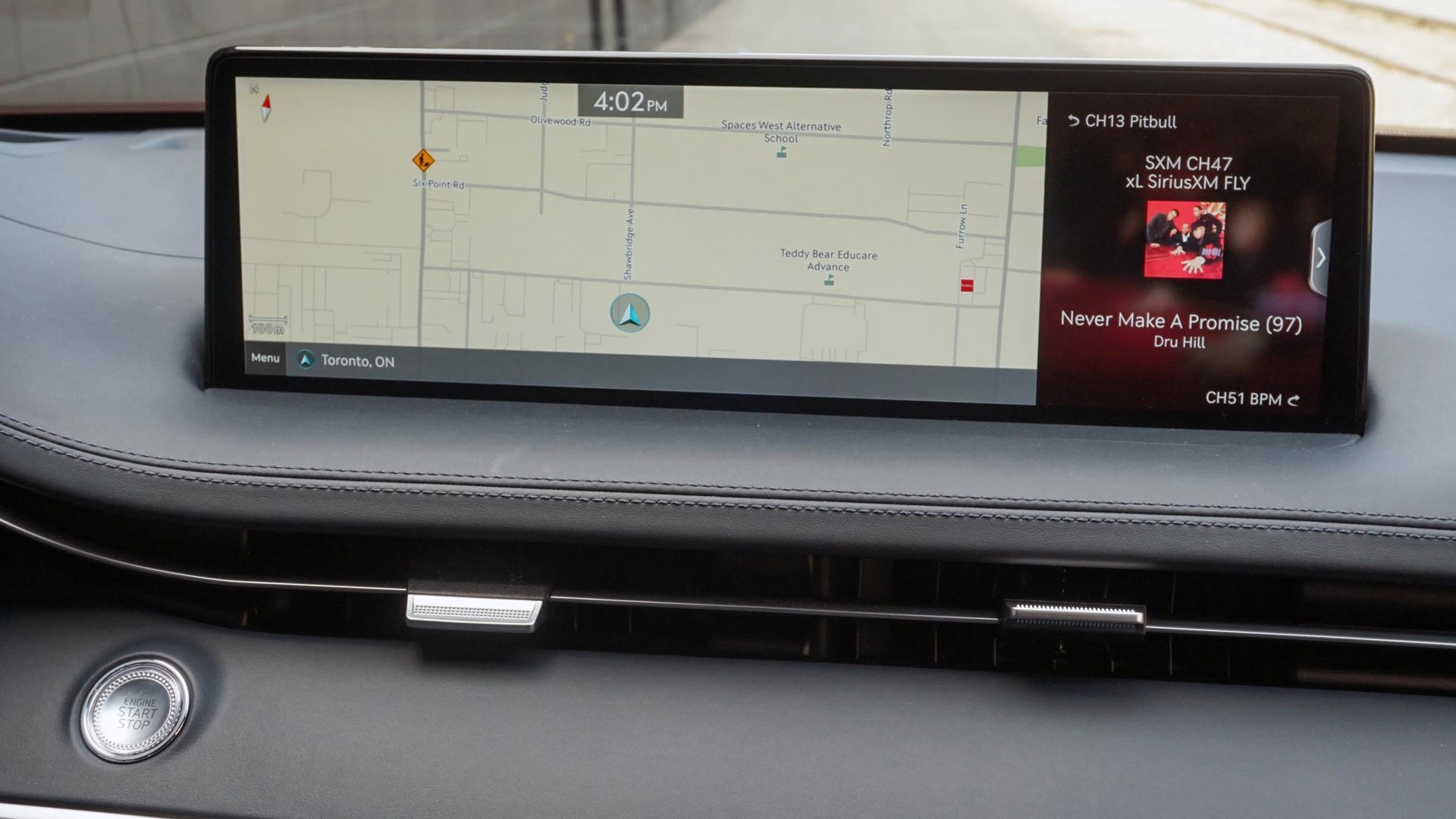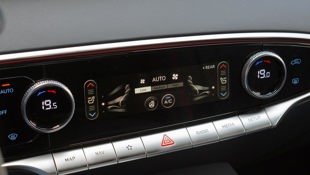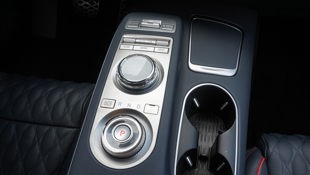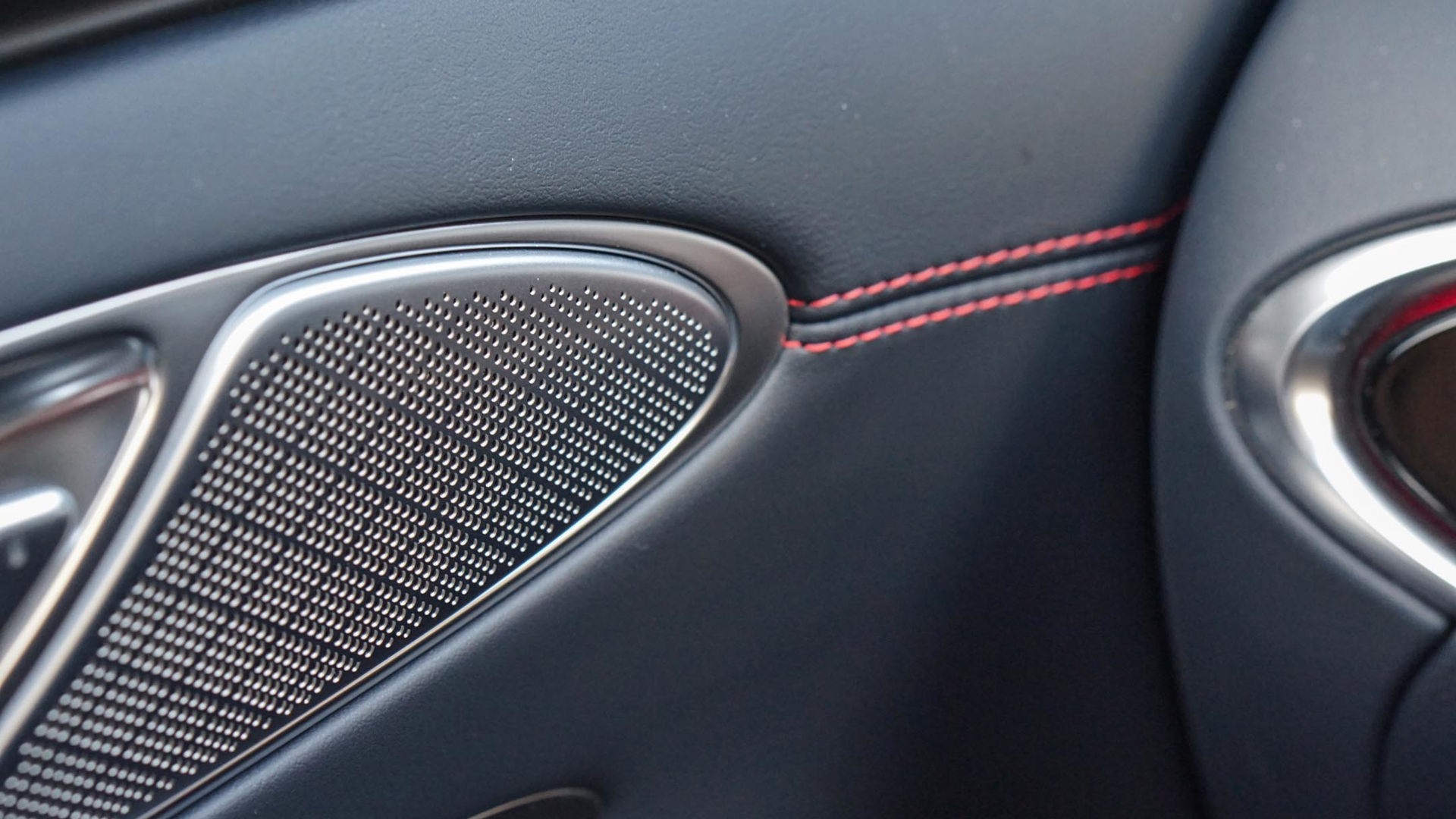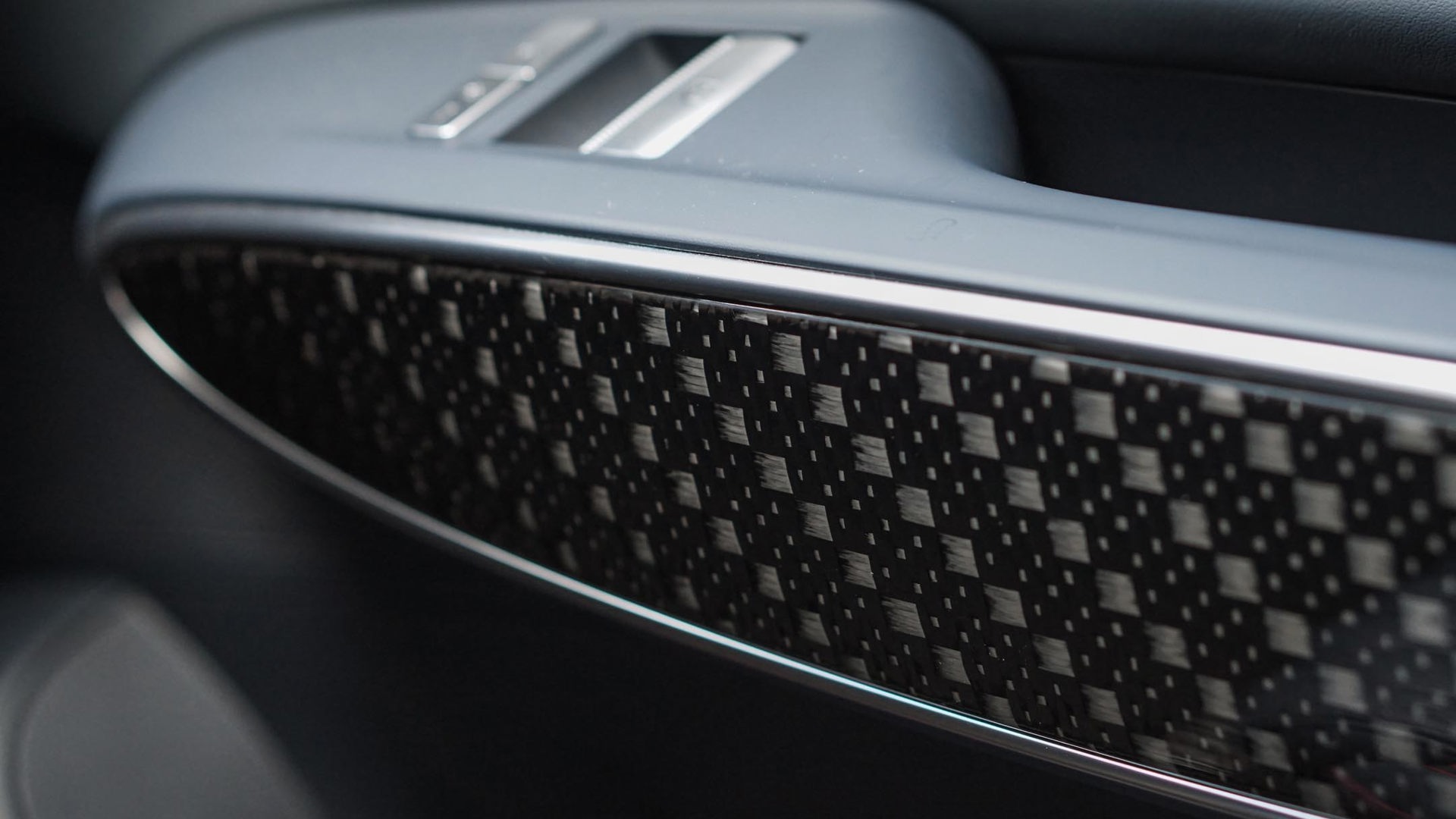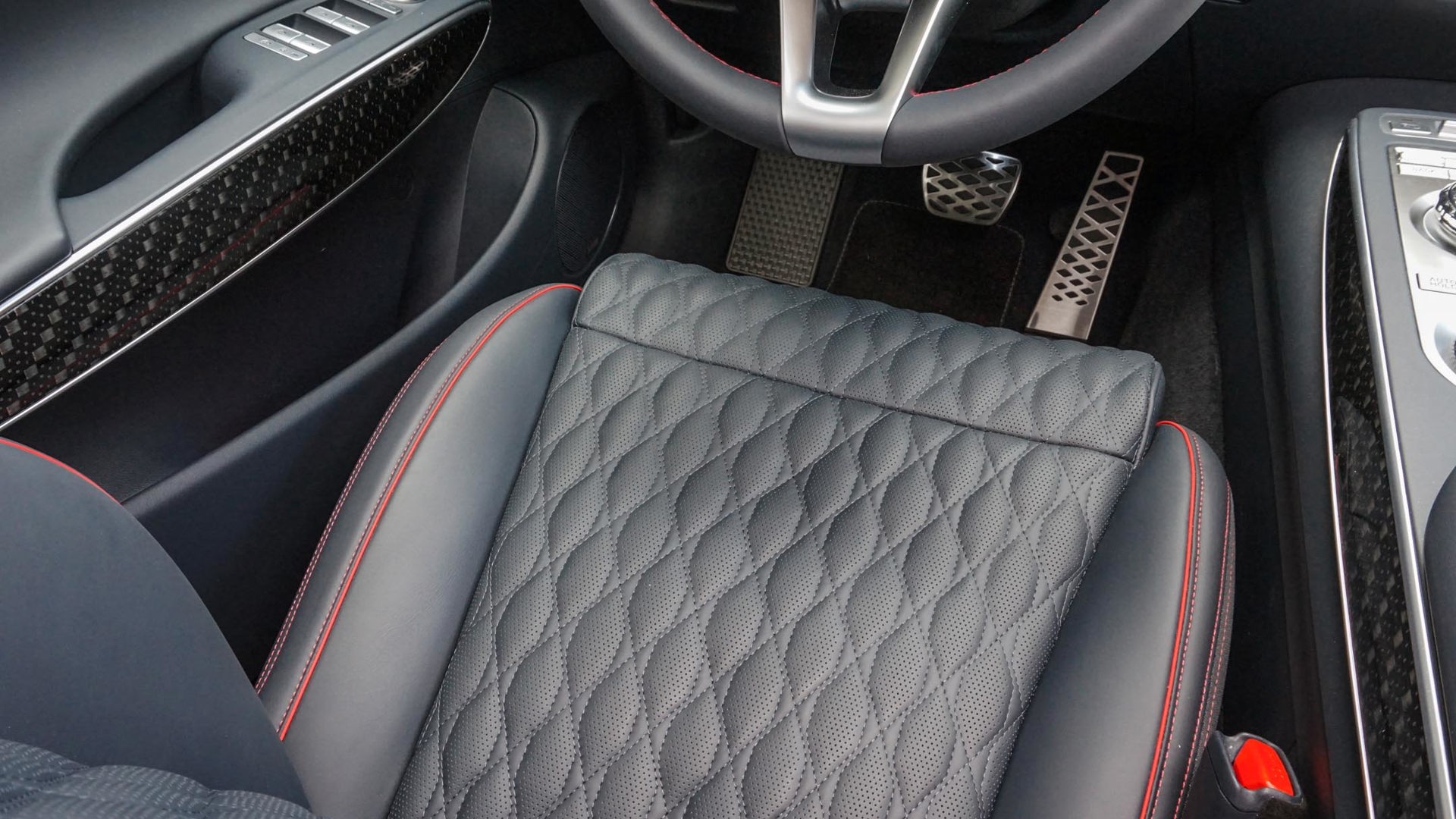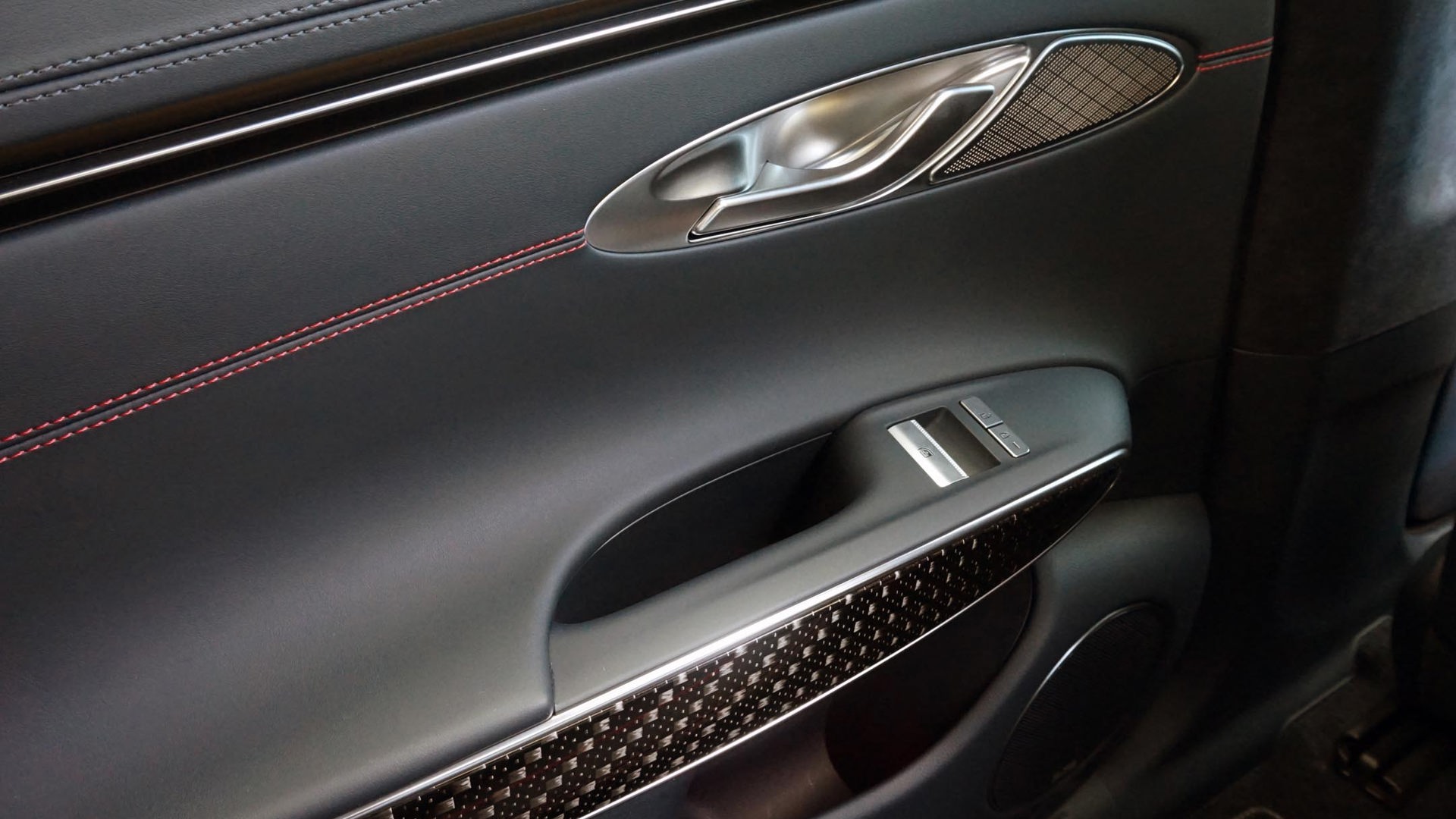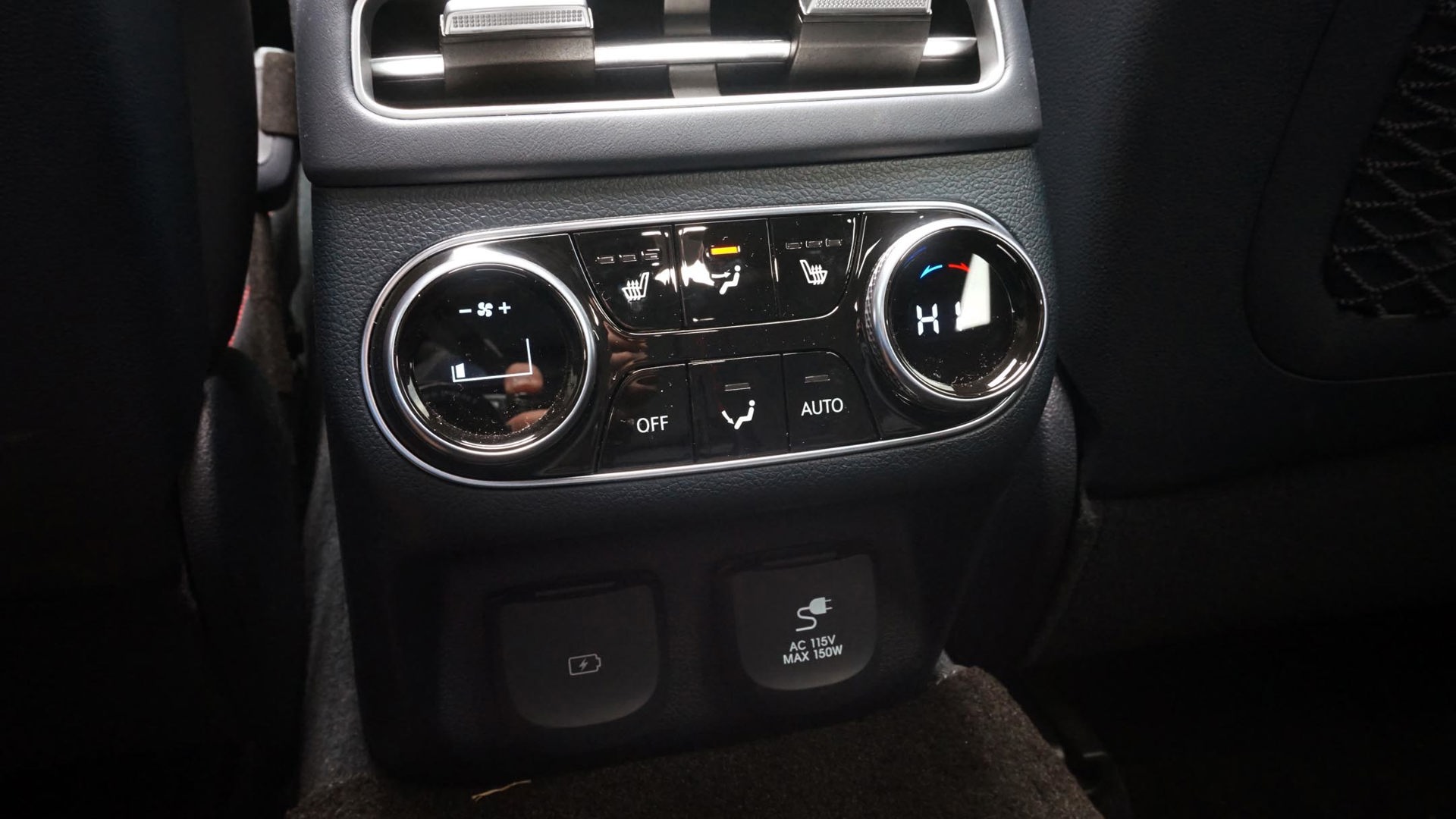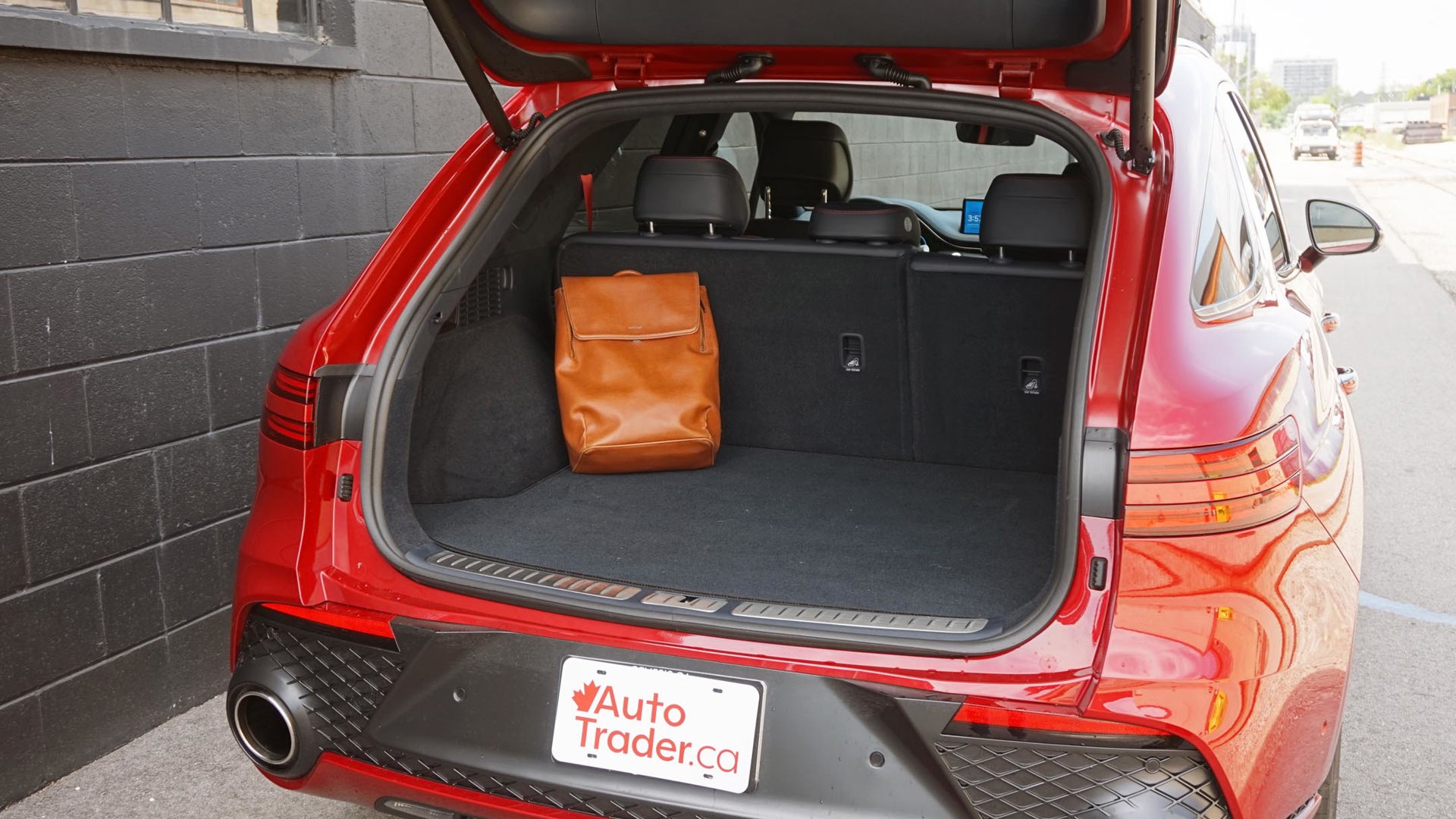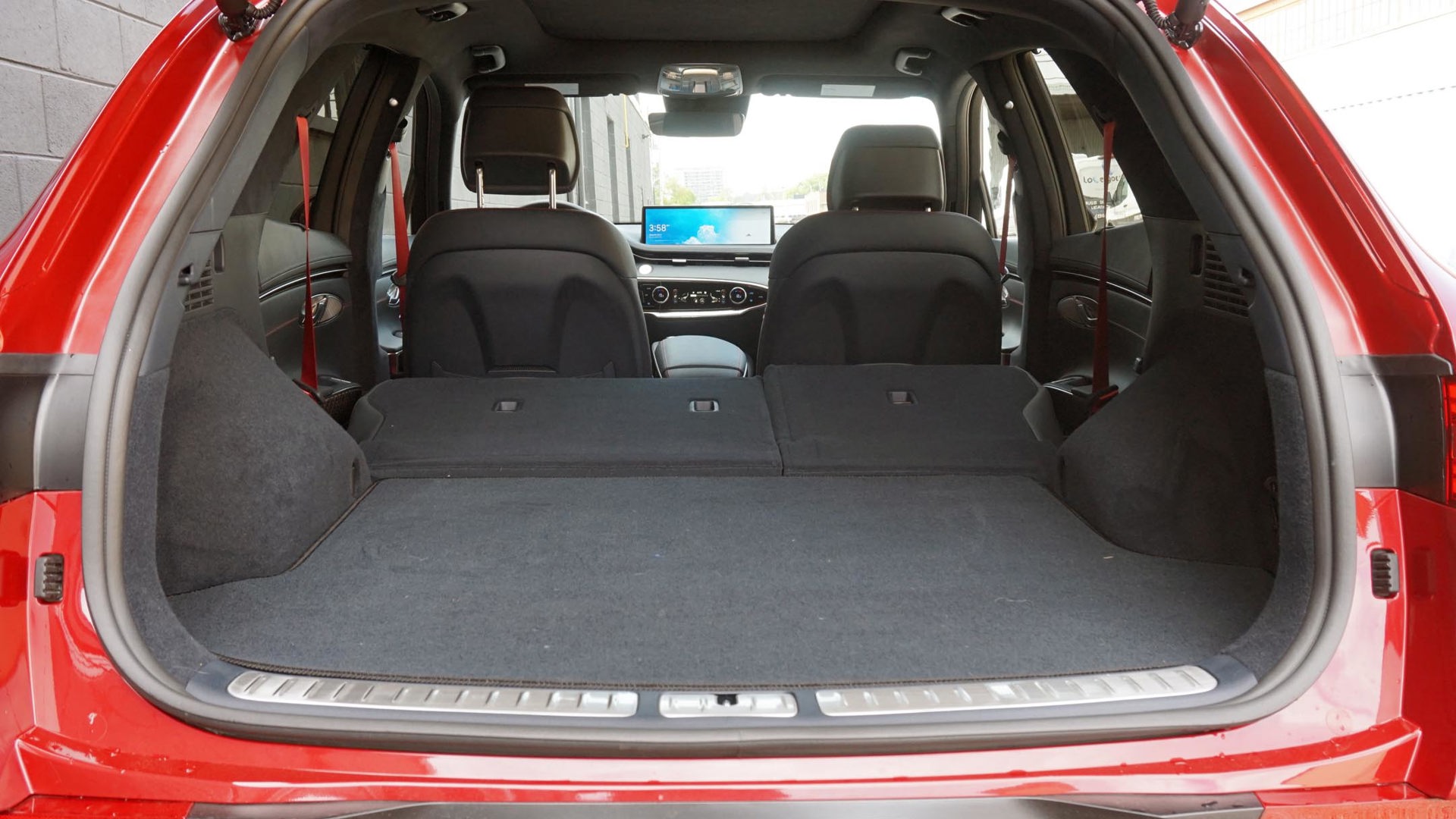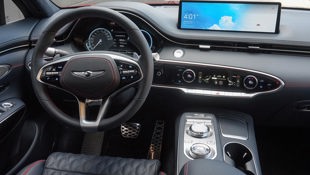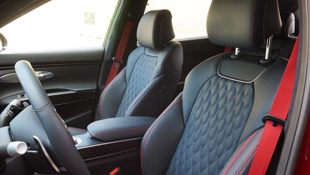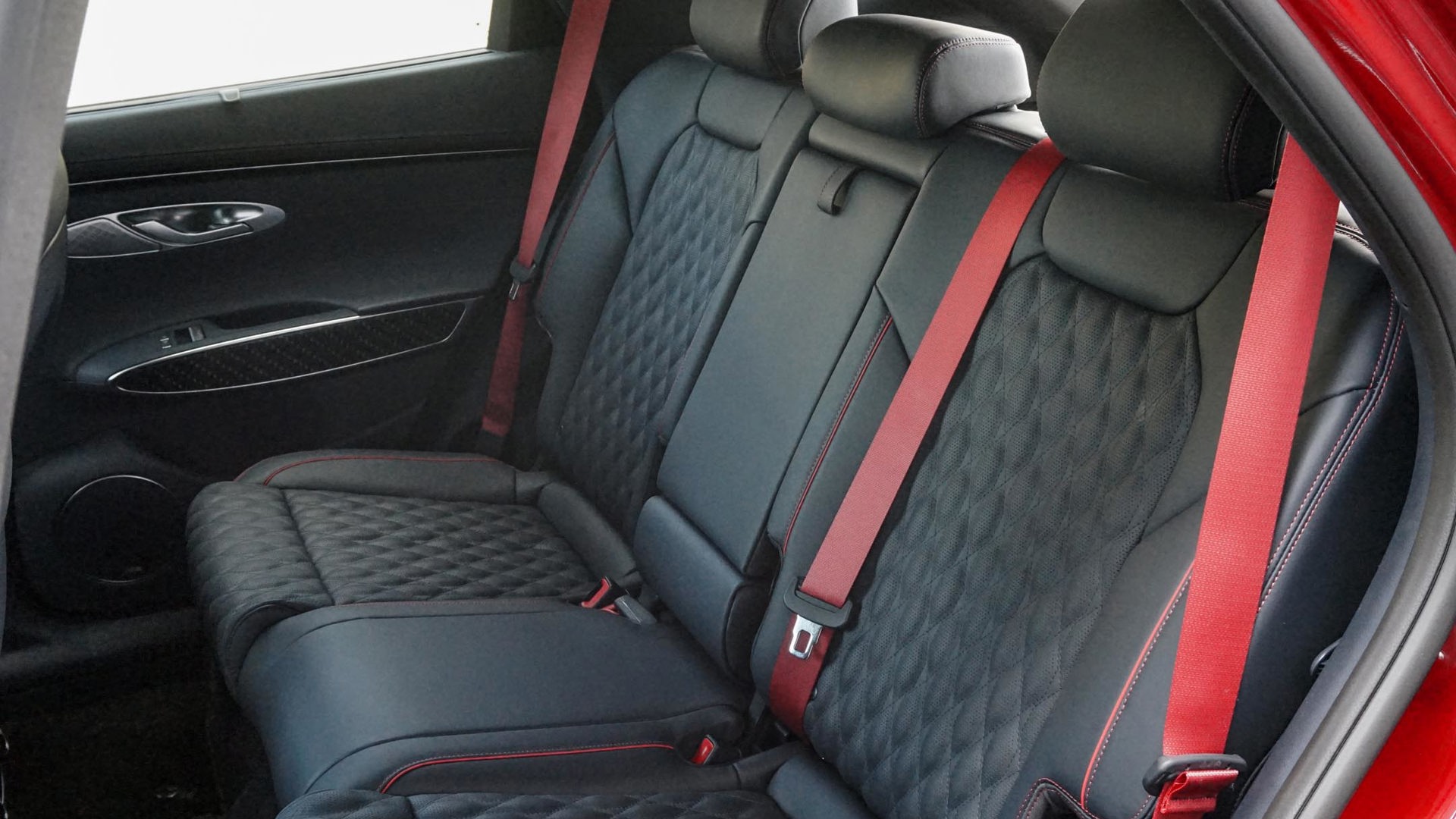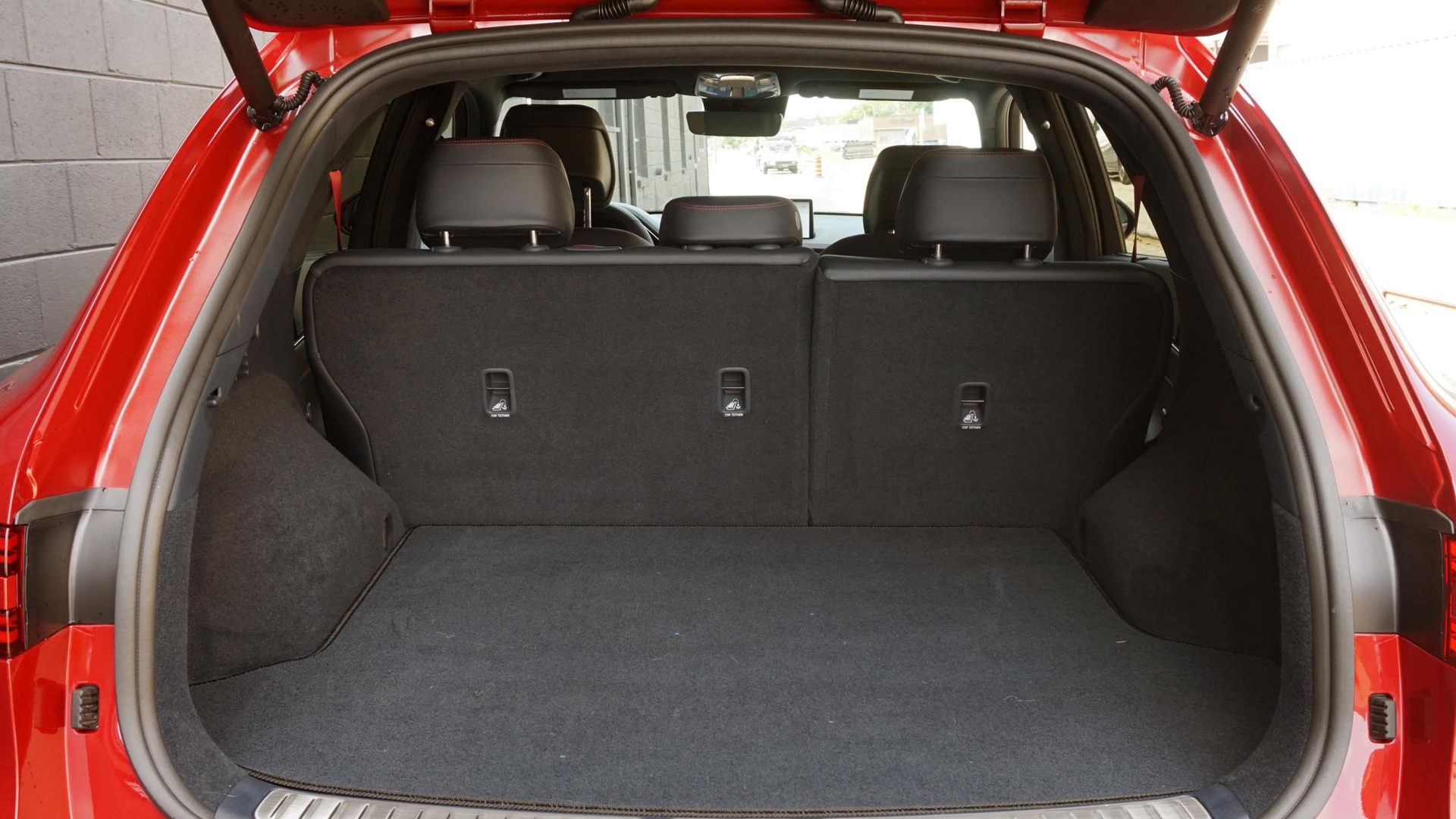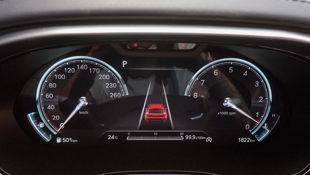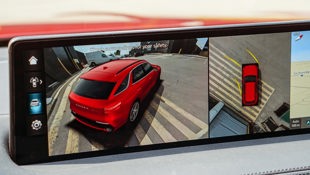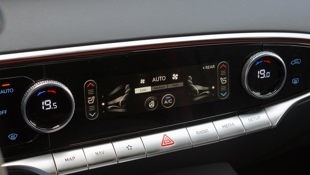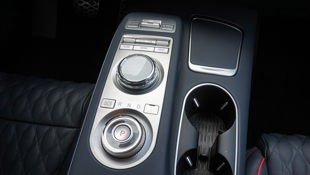 AutoTrader SCORE
AutoTrader SCORE
-
STYLING9/10
-
Safety9/10
-
PRACTICALITY8/10
-
USER-FRIENDLINESS7/10
-
FEATURES9/10
-
POWER9/10
-
COMFORT8/10
-
DRIVING FEEL9/10
-
FUEL ECONOMY8/10
-
VALUE9/10
The 2022 Genesis GV70 is an all-new model that’s expected to double this brand’s sales, so there’s no downplaying its significance and how good it needs to be.
While Genesis has consistently been delivering excellent vehicles to this point, if the goal is to get more drivers like you into its vehicles, having a competitive player in the small sport utility segment is vital to the brand’s overall success and growth.
Ever the overachiever, Genesis has once again delivered an exceptional vehicle with the 2022 GV70 – a compact luxury SUV that anyone shopping in the segment should consider.
Style: 9/10
Regardless of whether or not you like the GV70’s somewhat divisive style, you can’t deny the fact that it looks like nothing else on the market. It’s tough to get this many looks and questions from curious passersby with a sub-six-figure vehicle, and the GV70 stopped people in their tracks time and time again during testing. While it’s likely due to the novelty of being a new model from a relatively unknown brand, the design is striking and demands attention.
There’s a lot going on here, with an abundance of details to focus on, but the overall look is cohesive and unique. From the stacked double head- and taillights to the large, shield-shaped mesh grille, interesting wheels, enormous exhaust tips, and unique rear three-quarter view, all the details keep the eyes moving and the interest flowing.
There are also two distinct looks depending on trim. The 2.5T Select, Advanced, and Advanced get a more elegant, subdued design; while the topline 2.5T Prestige and all V6 models get a sportier look with more in-your-face details.
It gets even better inside. My tester was covered in a gorgeous and lush-looking dark blue leather with red contrast stitching and red seat belts, but other luxe colours like brown, dark green, and deep purple are also available in 2.5T models. The quilted leather seats are impressive and upscale. Real carbon-fibre inserts can be found in both the front and back, a rarity in this segment, but the lower trims also have fancy-looking trim pieces. The ovals and smooth, organic shapes, flowing lines, and mesh inserts used throughout the cabin give it a retro-futuristic look like space-age furniture, and there’s no mistaking the GV70’s luxury ethos.
The garnish on this fancy cocktail is a variety of interesting exterior paint options, my favourites being the metallic mauve called Barossa Burgundy, and Cardiff Green. My tester was done up in a metallic red called Mauna Red, which looked excellent with the dark blue leather and red accents inside. Four matte paint colours are also offered on V6 models.
Power: 9/10
Like the G70 sedan it shares a platform with, the GV70 comes standard with a 2.5L turbocharged four-cylinder with 300 hp and 311 lb-ft of torque, which gets the small SUV from standstill to 100 km/h in a claimed 6.1 seconds. My tester had the upgraded 3.5L twin-turbo V6 with 375 hp and 391 lb-ft of torque, and it’s enough to hit 100 km/h in 5.1 seconds with the launch control function. All GV70s come standard with a rear-biased all-wheel drive system that can split torque between the rear wheels when needed, and an eight-speed automatic transmission with paddle shifters and various driving modes. The V6 model even sounds quick, but it’s mostly digitally synthesized and pumped through the stereo.
Driving Feel: 9/10
Plenty of SUVs in this segment are either too soft or too hard, but the GV70 strikes the delicate balance of being just right. With the twin-turbo V6, the acceleration has the right urgency when needed and there’s only a whisper of turbo lag, as full torque is available from 1,300 rpm all the way to 4,500 rpm.
The steering has a good weight without feeling too demanding, and it feels direct and responsive. The brakes provide strong stopping without being twitchy. The suspension also hits a good balance of luxury and sport, ironing out most road imperfections while also feeling composed and confident on a twisty road. The top 3.5T version is also equipped with an electronically controlled suspension with navigation and front camera-based road preview, so it’s often able to anticipate the required settings before you do.
The transmission is also snappy and works seamlessly in the background except for a few instances where it shifted a bit roughly from second to third – and back down from third to second. It’s an issue that seems to be exacerbated by the rough engine stop-start system, but overall the GV70 feels confident and athletic.
Safety: 9/10
Genesis prides itself on being “all-in on safety,” and the brand includes a huge list of driver-assistance and advanced safety features as standard. Every GV70 comes with forward collision warning with automatic braking, automatic high-beam headlights, blind-spot monitoring with rear cross-traffic alert, junction traffic warning (when you’re turning left and can’t see incoming vehicles), evasive steering assistance, radar- and navigation-based adaptive cruise control, driver attention warning, safe exit assist (warns of incoming vehicles or cyclists before you open any doors), and rear occupant alert.
The only features only available on higher trims include rear parking collision assist, remote parking assist, a surround-view monitor, blind-spot cameras that activate when the turn signal is activated, and a feature that tells you if the car in front of you has moved and you haven’t responded yet. A unique safety feature is one you’ll hopefully never have to use: an airbag that prevents the front two occupants from smashing into each other in the event of a collision.
Features: 9/10
The adaptive cruise control system works incredibly well and is easy to use. In addition to scanning the space ahead of the GV70 to keep a safe distance from a preceding vehicle, the system also scans the areas around the SUV so it can tell when another vehicle is about to cut in, enabling it to react and slow down in a natural, progressive way instead of slamming on the brakes like so many other systems do. It also scans the area beside the SUV so it can keep a safe distance from the cars beside it if they start to drift.
The system also has lane-change assist, which will change lanes on its own when you activate the turn signal and the sensors determine it’s safe. It’s a bit of a gimmick and I don’t find it particularly helpful because it’s so easy to change lanes on your own, but it’s still a neat feature.
The GV70 also has a parking assistant for perpendicular and parallel parking, but I wasn’t able to make it work, so the system might need some ironing out or clearer instructions. Drivers can also drive forward or reverse the GV70 into a tight parking space using the keyfob without having to be inside the car.
Genesis brags that it has a lot of “world-firsts” in the GV70, one being a fingerprint scanner. While in other countries it allows you to access your “Genesis wallet” to pay for stuff, we don’t have that capability yet, so the scanner is used to unlock valet mode or make changes to your driver profile. At the moment, its functionality is quite limited and, to be honest, sort of lame; but the possibilities are exciting and it’s fun to show your friends. I feel like it would be more useful if it could be used to unlock and start the car in the event you lose your keys or if you want to keep the keys inside the car during an outdoor activity, but there is no scanner on the door handle, just inside on the dash near the push-button start.
Another standout feature is the 12.3-inch digital gauge cluster, which projects a 3D image to help you focus on certain information more easily. It doesn’t make a huge difference, but it’s neat to experience and, again, is a brag-worthy feature. Drivers can turn it off if they don’t like it. The head-up display is also one of the industry’s best. It’s large, bright, and shows a bunch of useful information like if there’s something in your blind-spot, speed limit information that glows red if you’re speeding, navigation directions, and more.
Of course, Apple CarPlay and Android Auto are included, but must be used via a wired connection. It seems like a bit of a waste, then, to have the standard wireless phone charger if smartphone mirroring can’t be used wirelessly. Android Auto also doesn’t use the full two-thirds of the widescreen allotted to it, so there’s a bit of dead space that could have been put to better use.
User-Friendliness: 7/10
My biggest beef with the GV70’s user-friendliness is that even after a few days, I still found myself reaching for the gear selector dial when I meant to use the infotainment system’s scrolling wheel, which is situated further away from the driver. I even once mistakenly put the SUV into neutral when all I wanted to do was change the radio station and had a moment of panic. This is problematic and even though the knobs are different in design, the shape and size are too similar and the placement doesn’t make a lot of sense.
Other than that, the layout is logical and drivers have a few options to interact with the infotainment system. The huge 14.5-inch touchscreen can also be controlled by the aforementioned multimedia controller, which also acts like a scroll wheel and a joystick and has a touchpad on top that drivers can use to swipe or draw in letters for handwriting recognition. The menus make sense and finding certain functions is easy and intuitive, though some drivers might not be a fan of the haptic-touch controls for the climate control system, preferring analogue buttons instead. Temperature is controlled by low-profile clicky knobs, and I appreciated the hard buttons for different sections of the infotainment system, made better by home and back buttons, and three buttons that can have customized functions.
Visibility from the driver’s seat is excellent, and the small SUV is easy to park with the crisp reverse camera and top-down 360-degree parking camera. There’s also a function where the system stitches together views from the various cameras to produce a 3D visualization of the SUV and its surroundings that can be dragged and moved around so you can see any obstacles. I first saw this feature on a Lamborghini, so it’s impressive to see that this tech has trickled down to more affordable vehicles.
Practicality: 8/10
The GV70’s liftover height to access the trunk is oddly high, but the crossover is rated to hold 819 L of cargo in the trunk and 1,610 L with the rear seats folded flat. The spare tire is under the trunk floor and there’s also a spot under there to hold the cargo cover, which is a thoughtful feature.
Up front, there is a large centre console bin for storage, a covered cubby that houses the wireless phone charger, and water bottle storage in the doors, but there aren’t a lot of other places for small items.
Comfort: 8/10
Heated front seats and a heated steering wheel are standard across the lineup, with ventilated front seats and heated rear seats standard in every GV70 but the base trim. As a driver, it’s easy to find a comfortable seating position with the 16-way power seats with memory in the top-trim models. The seats are supportive and comfortable, even for long trips.
Rear-seat passengers get access to two USB ports and a 120-volt household electrical outlet. The space in the second row isn’t huge, but it’s comfortable enough if there aren’t taller people up front.
Fuel Economy: 8/10
The Genesis GV70 3.5T is officially rated to get 12.9 L/100 km in the city, 10.0 on the highway, and 11.6 combined. My final tally after about 470 km of driving was 11.4 L/100 km – not bad for an SUV like this. Keep in mind that the GV70 requires premium fuel. The closest BMW competitor, the X3 M40i, is rated at 11.3 L/100 km city, 8.7 highway, and 10.1 combined, while the Mercedes-AMG GLC 43 is rated at 13.3 city, 9.6 highway, and 11.6 combined.
Value: 9/10
Genesis packs in a lot for the price. Entry to the GV70 club starts at $49,000 including freight for the 2.5T model, which tops out at $63,000. The 3.5T model starts at $68,500 and goes up to $75,500 for the fully loaded top trim 3.5T Sport Plus AWD that I tested. While that might seem like a steep price to pay for a compact crossover, the 2022 Genesis GV70 feels worth it and its price still undercuts its competition by thousands for a comparable feature set. Keep in mind that Genesis has trims but no options, so the price you see is the price you pay – before tax, of course – and the price includes five years (or 100,000 km) of scheduled maintenance. If you’re within range of a Genesis centre, valet pick-up/drop-off for service and loaner vehicles are included as well.
The BMW X3 M40i starts at $69,504 and that’s before the $2,480 destination fee and the endless list of features the brand makes you pay extra for (anything from metallic paint to safety features, which Genesis includes as standard).
The Verdict
Genesis is always raising the bar for itself and other luxury automakers, and the 2022 Genesis GV70 embodies that ambition. The brand describes the GV70 as the most important model in its history, and there is no mistaking how high Genesis was aiming with this compact SUV. The result is an overachieving SUV that is easily one of the best vehicles in its segment. The 2022 Genesis GV70 makes a bold statement about the brand, but also about the drivers who will end up with one in their driveway.
| Engine Displacement | 3.5L |
|---|---|
| Engine Cylinders | Twin-turbo V6 |
| Peak Horsepower | 375 hp @ 5,800 rpm |
| Peak Torque | 391 lb-ft @ 1,300–4,500 rpm |
| Fuel Economy | 12.9 / 10.0 / 11.6 L/100 km cty/hwy/cmb |
| Cargo Space | 819 / 1,610 L seats down |
| Model Tested | 2022 Genesis GV70 3.5T Sport Plus AWD |
| Base Price | $75,500 |
| A/C Tax | $100 |
| Destination Fee | Included |
| Price as Tested | $75,600 |
|
Optional Equipment
None
|
|

